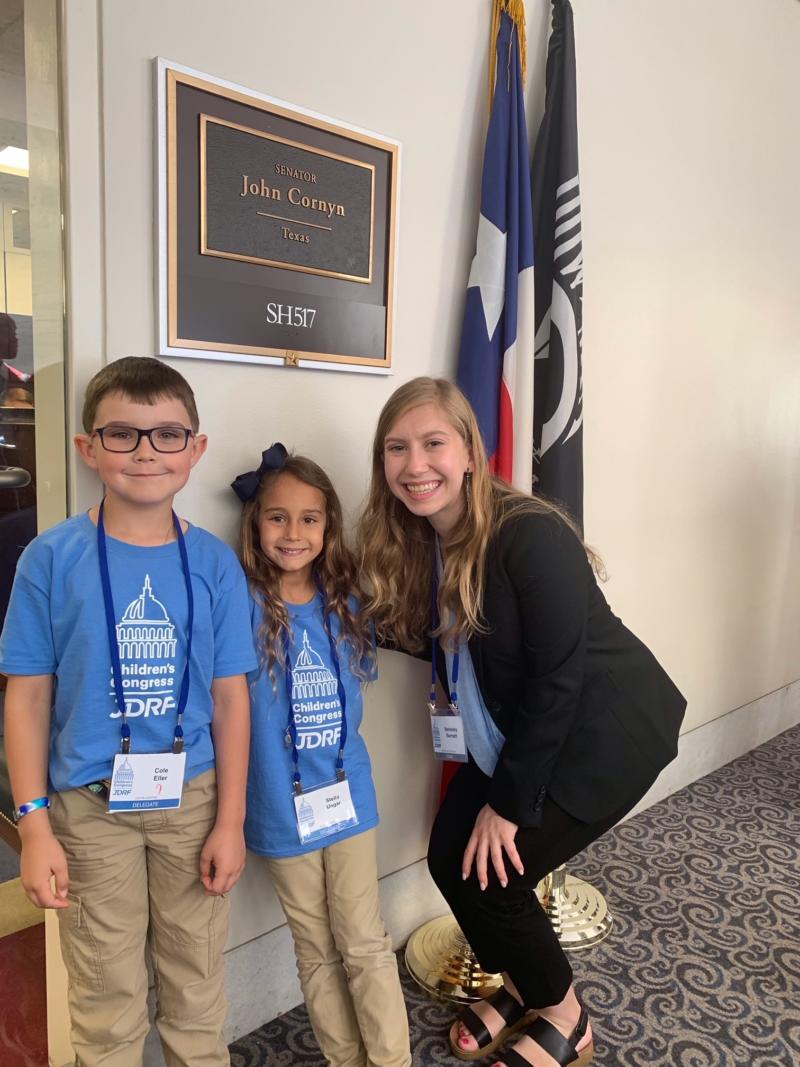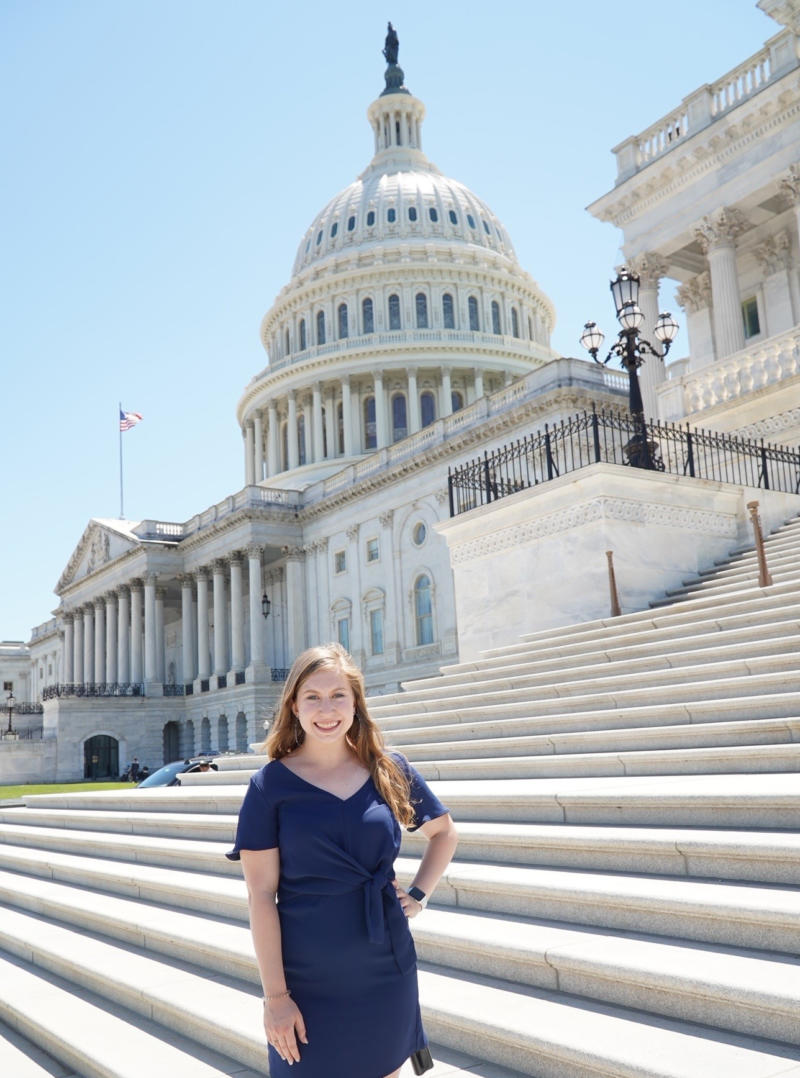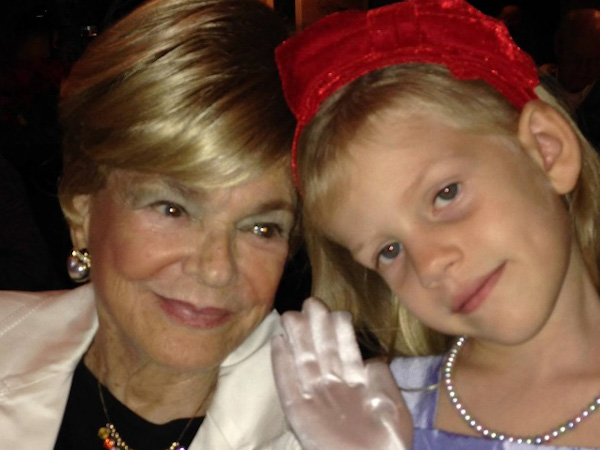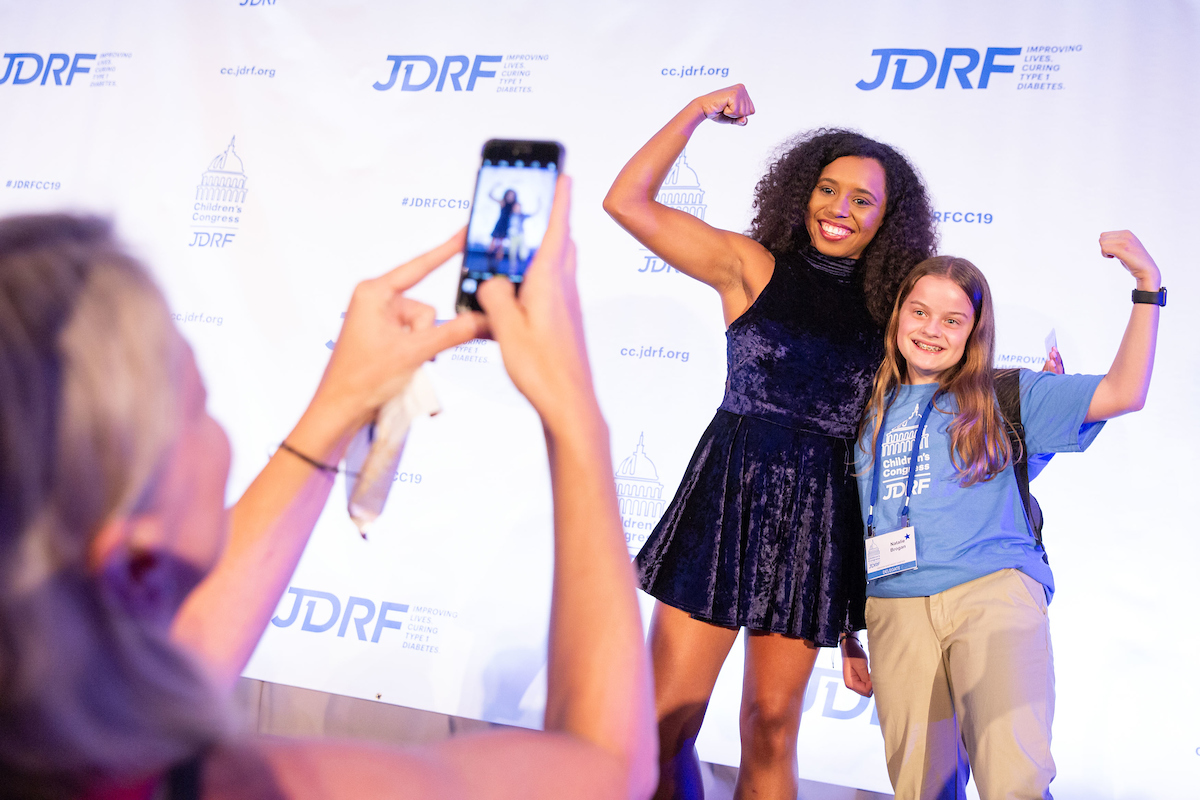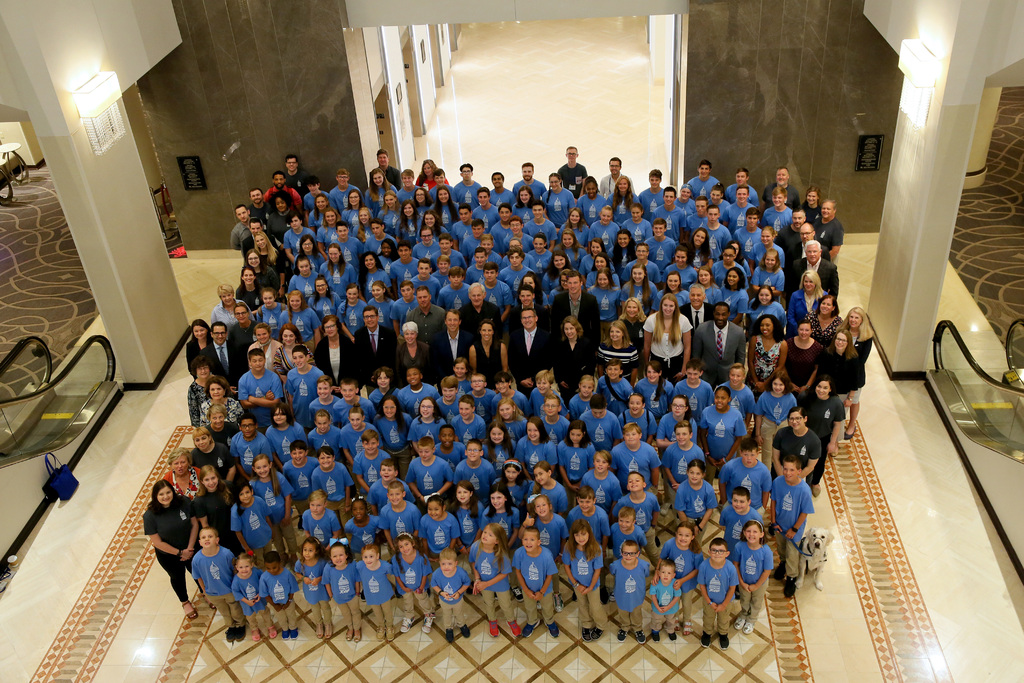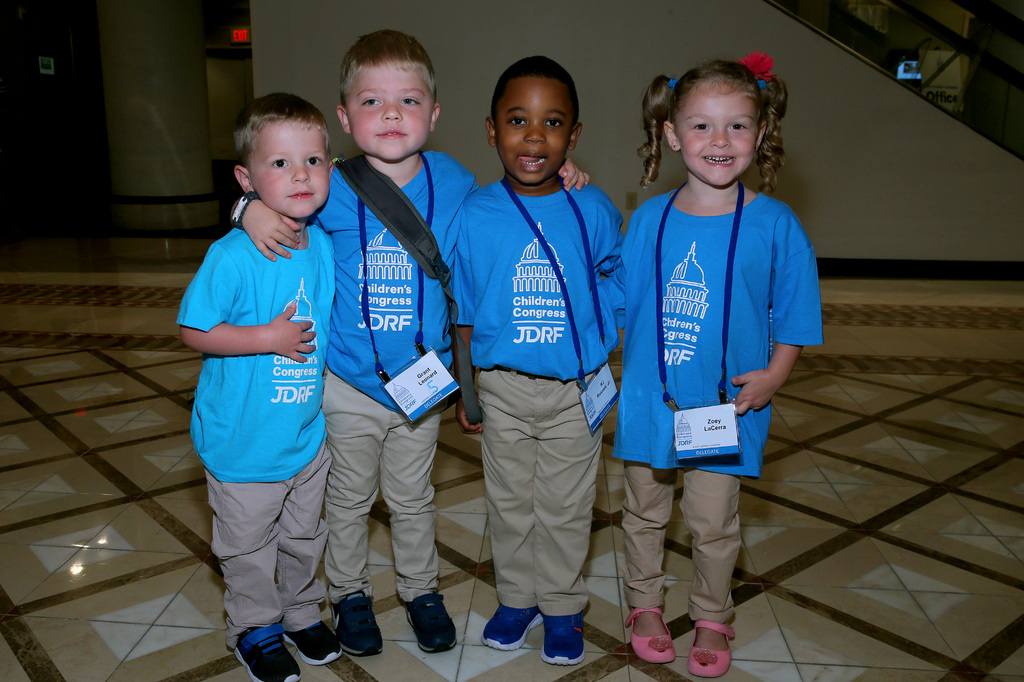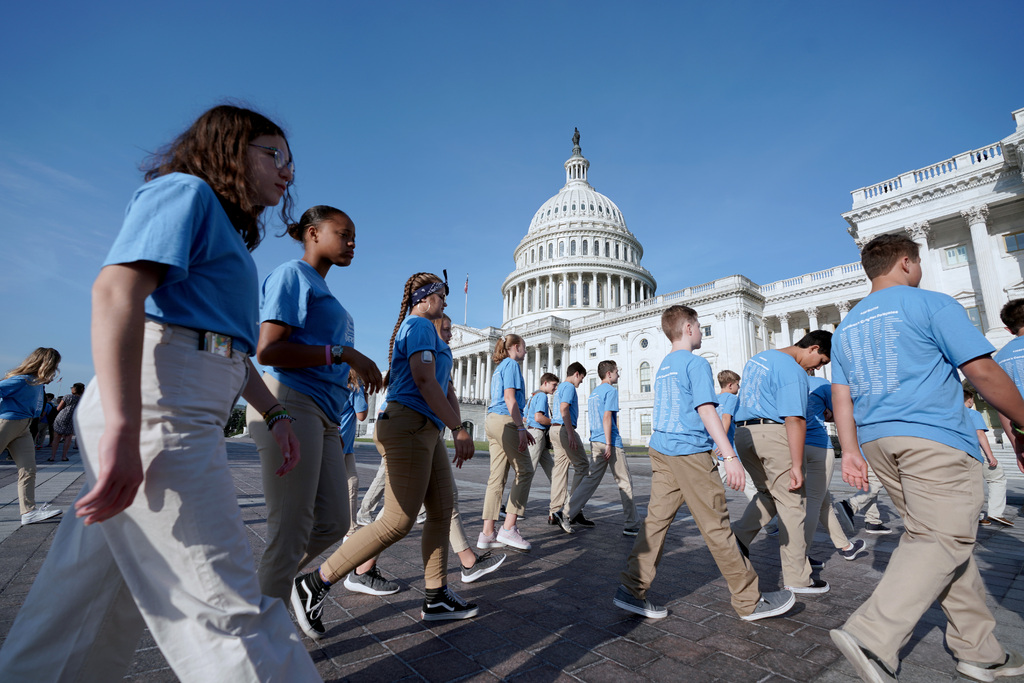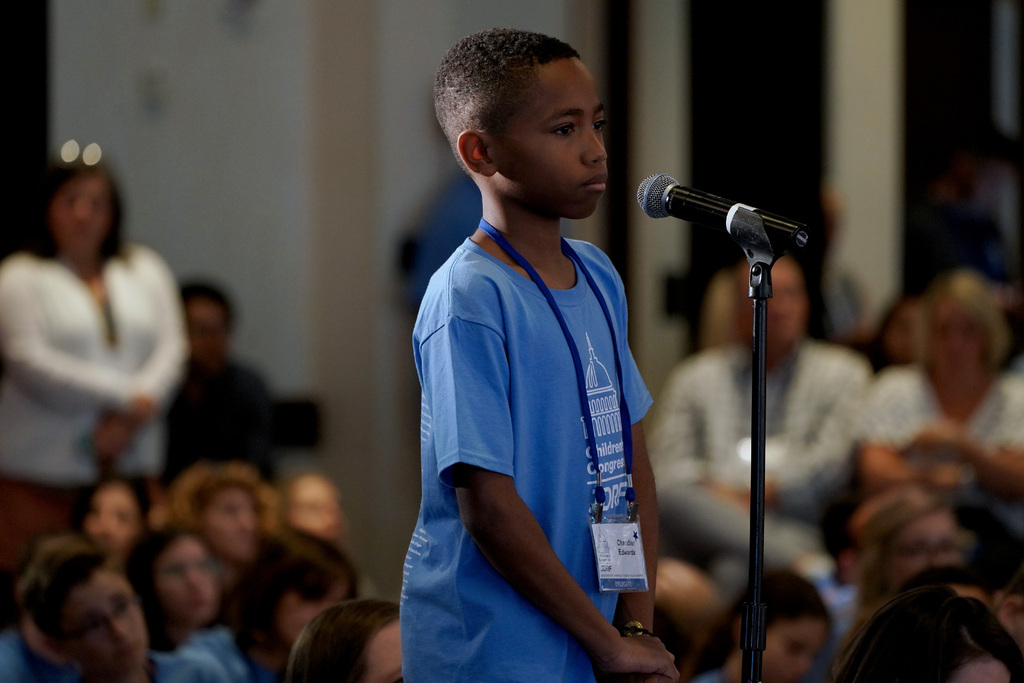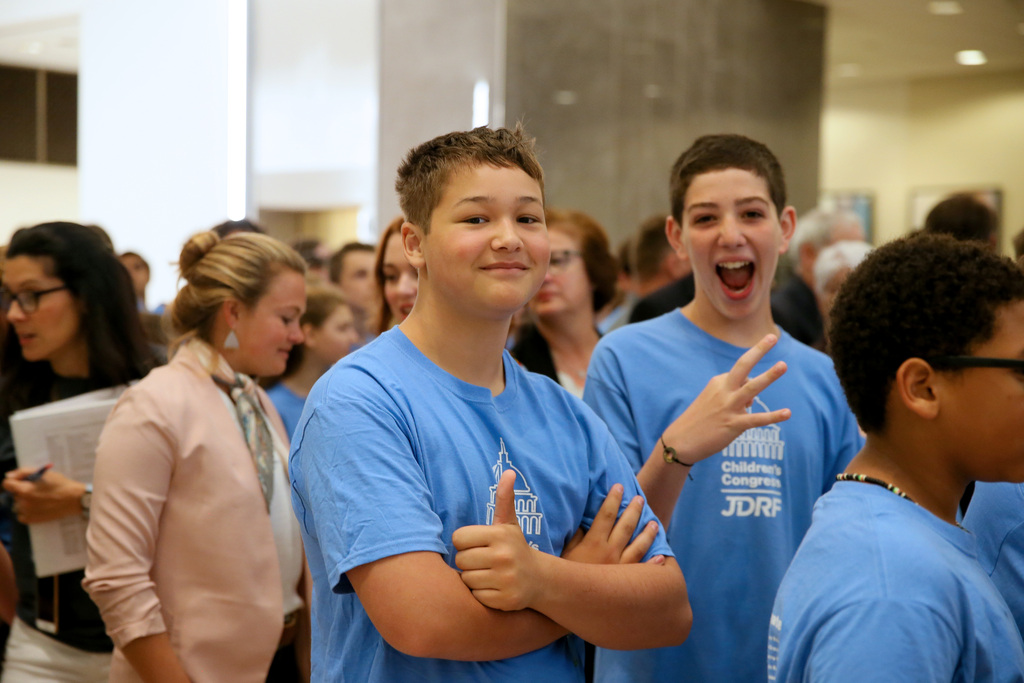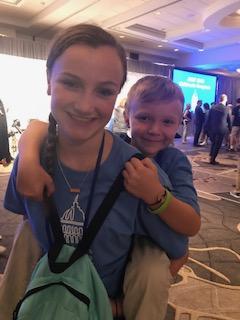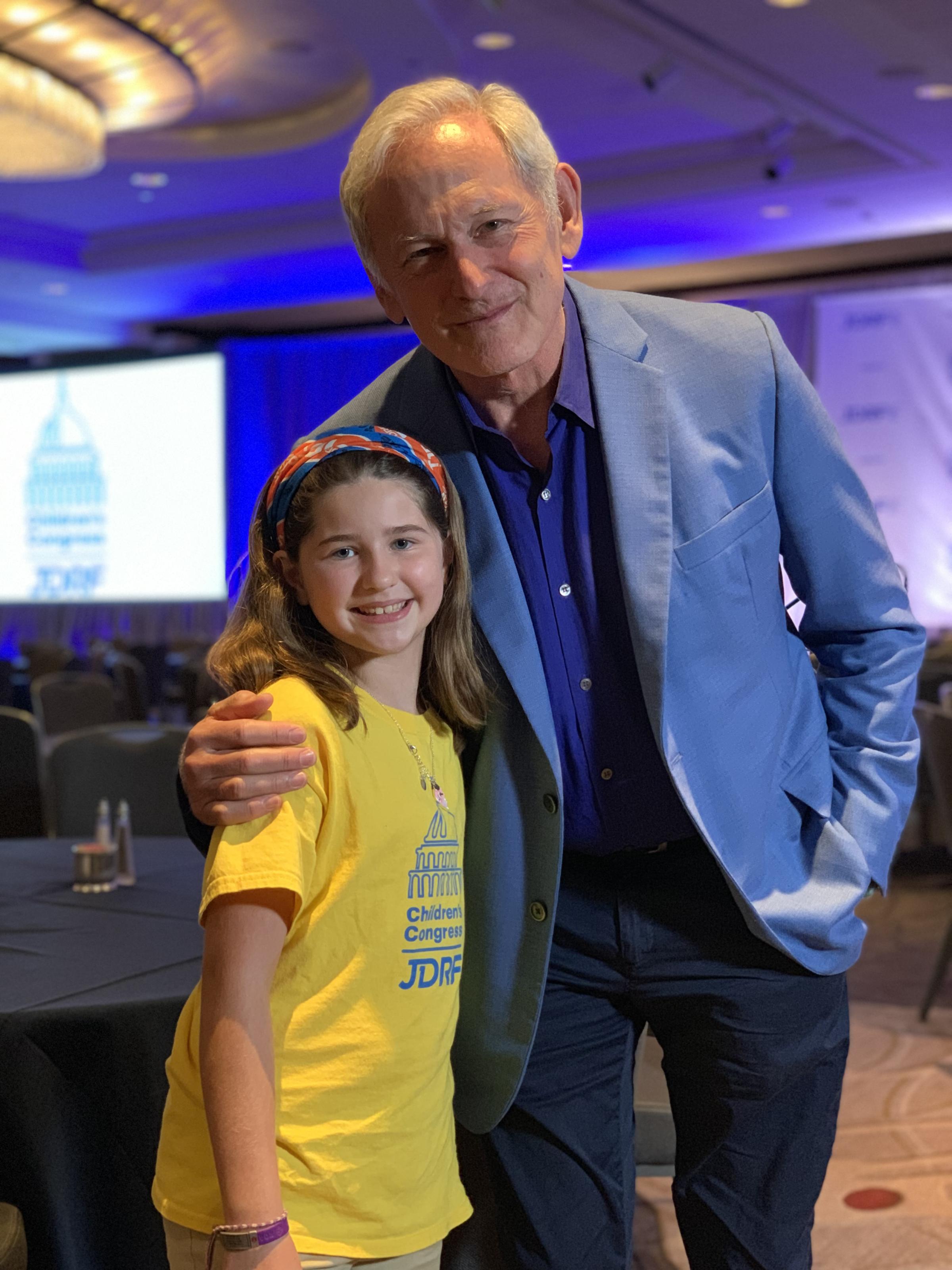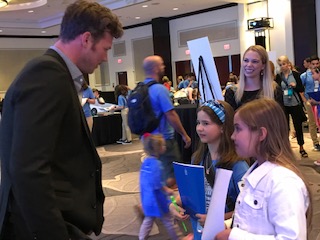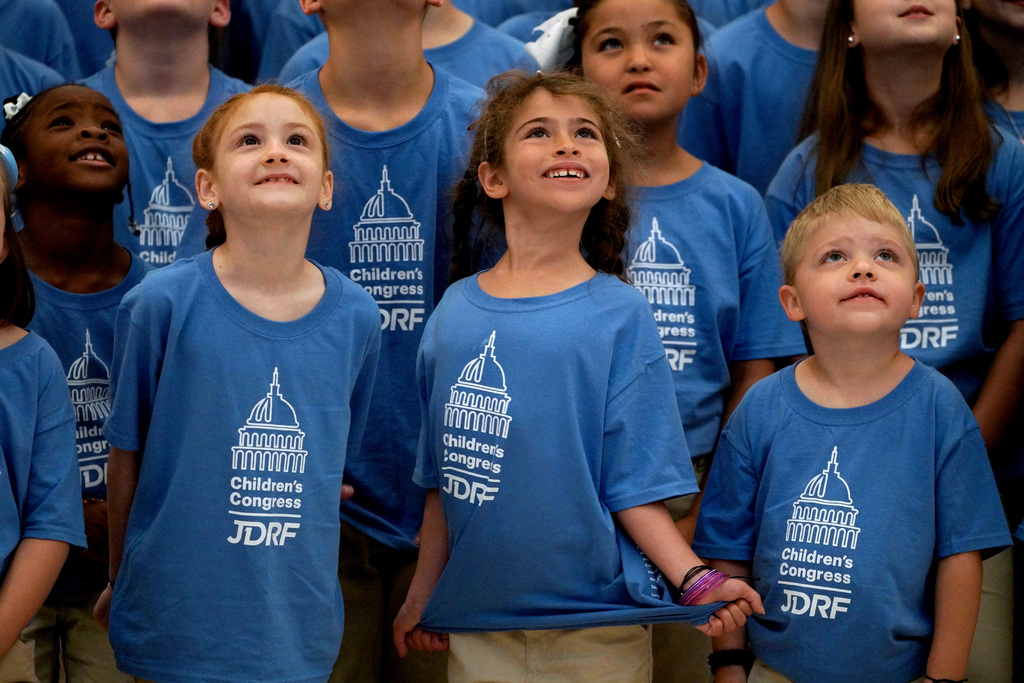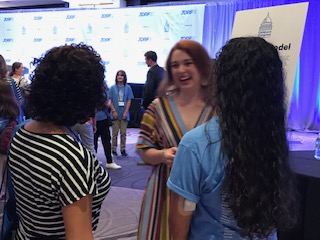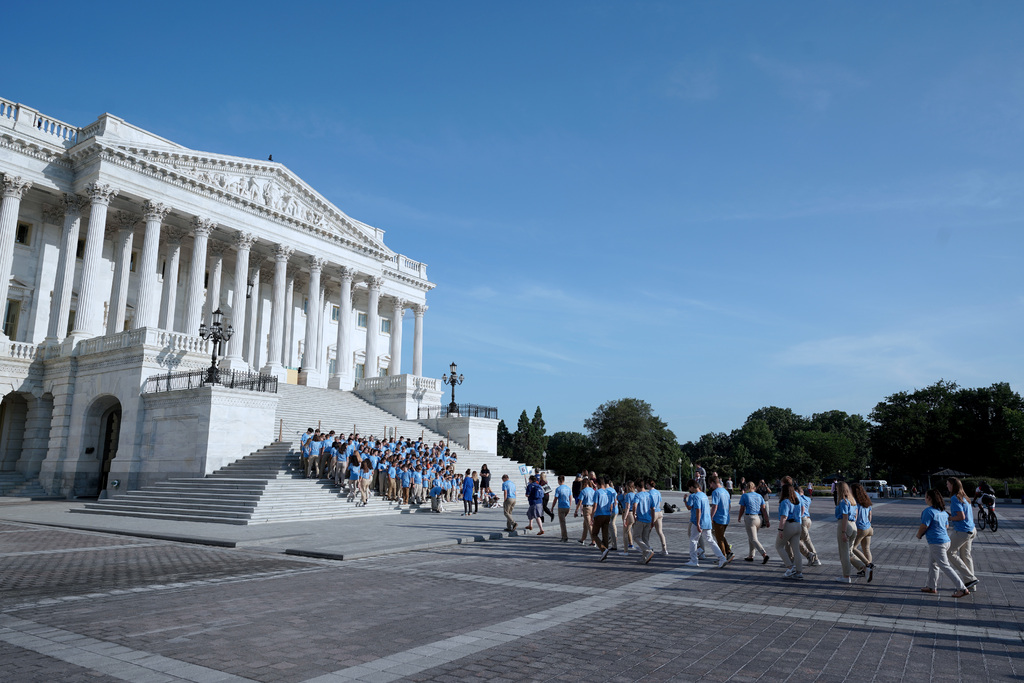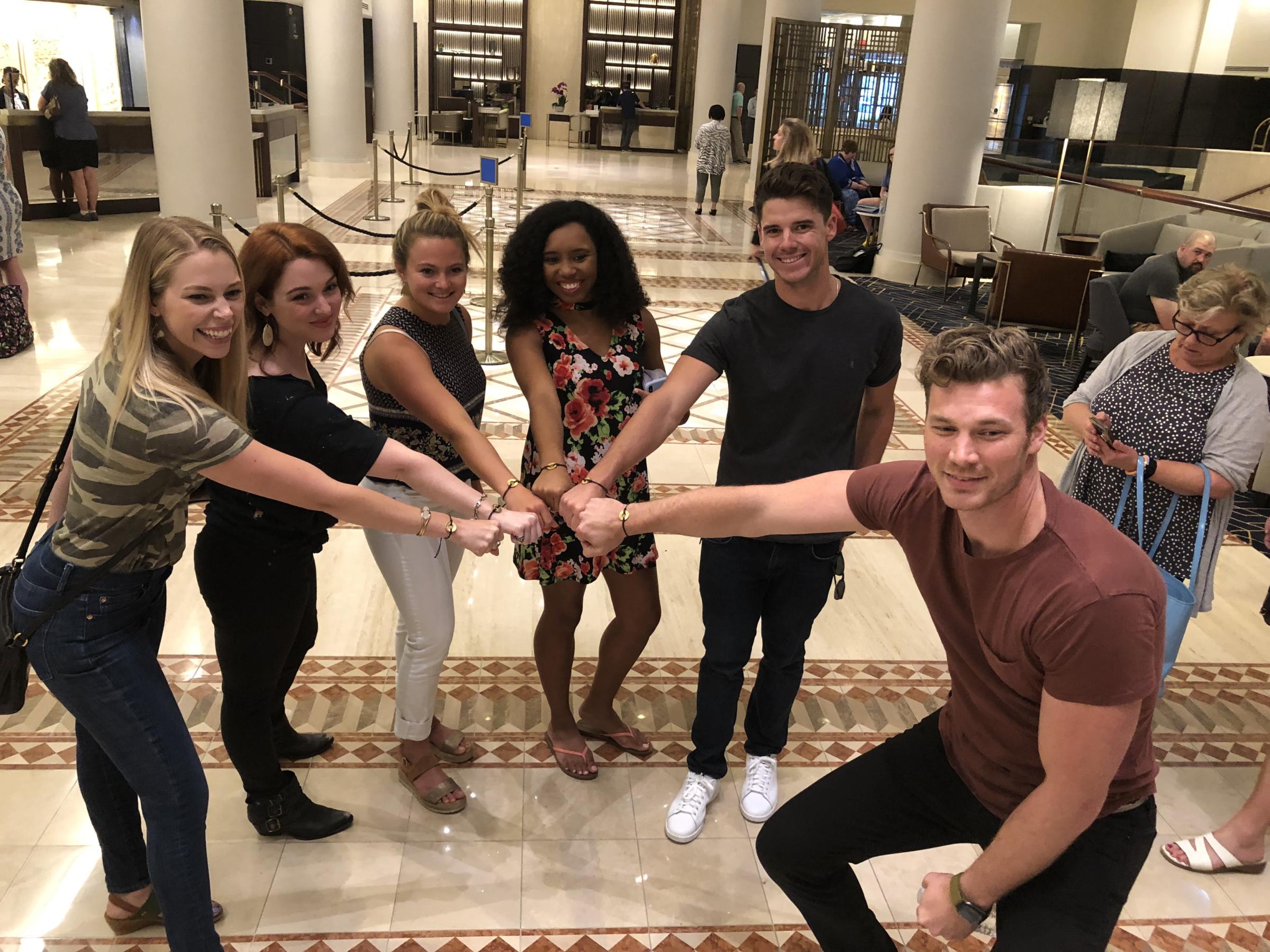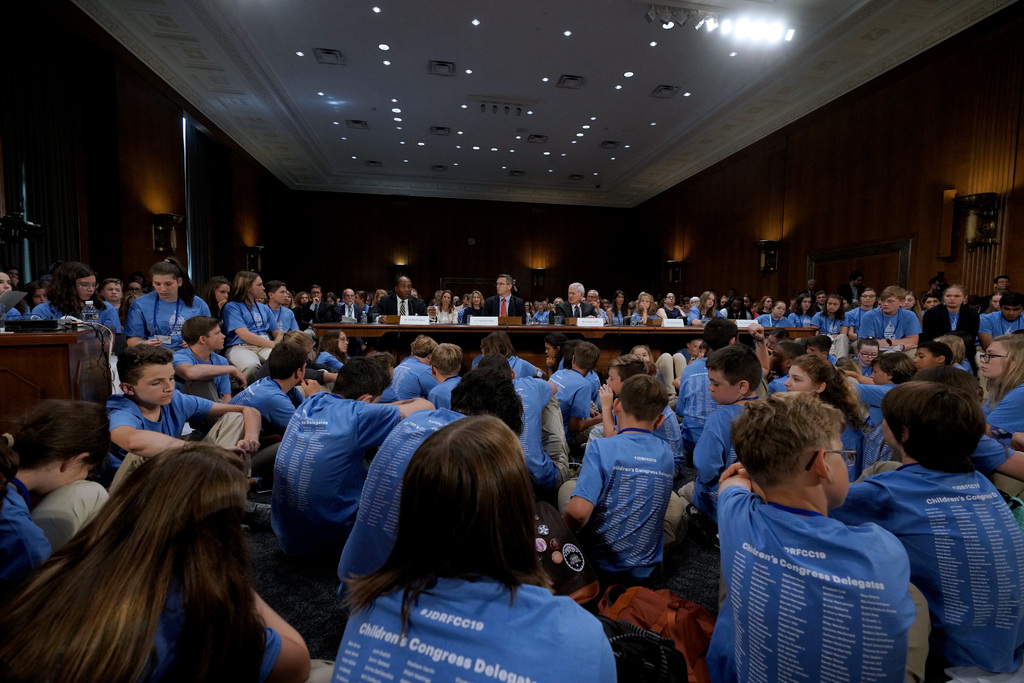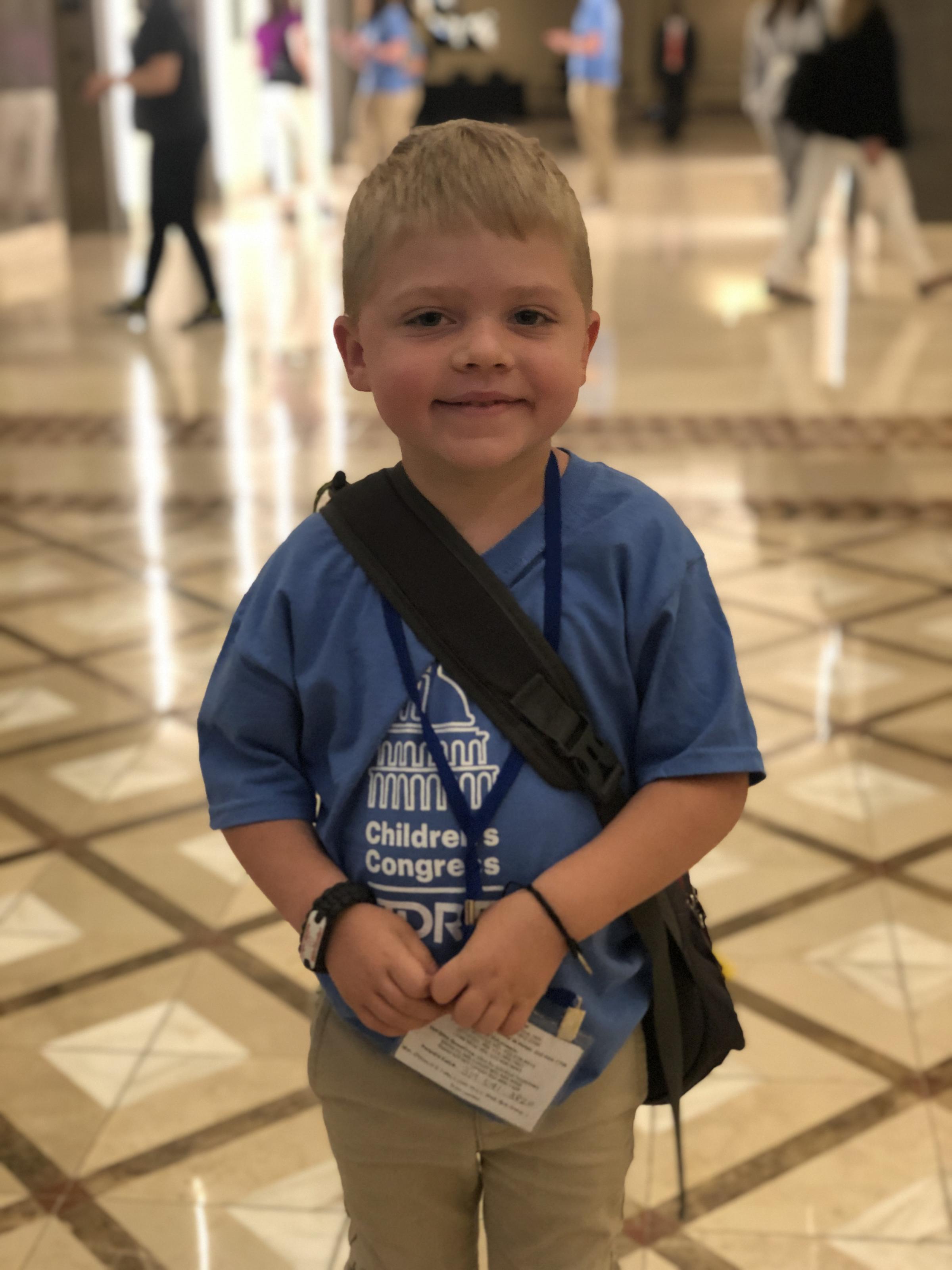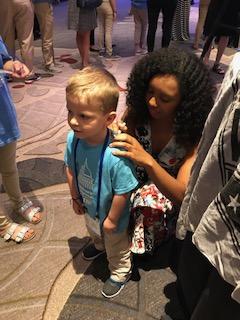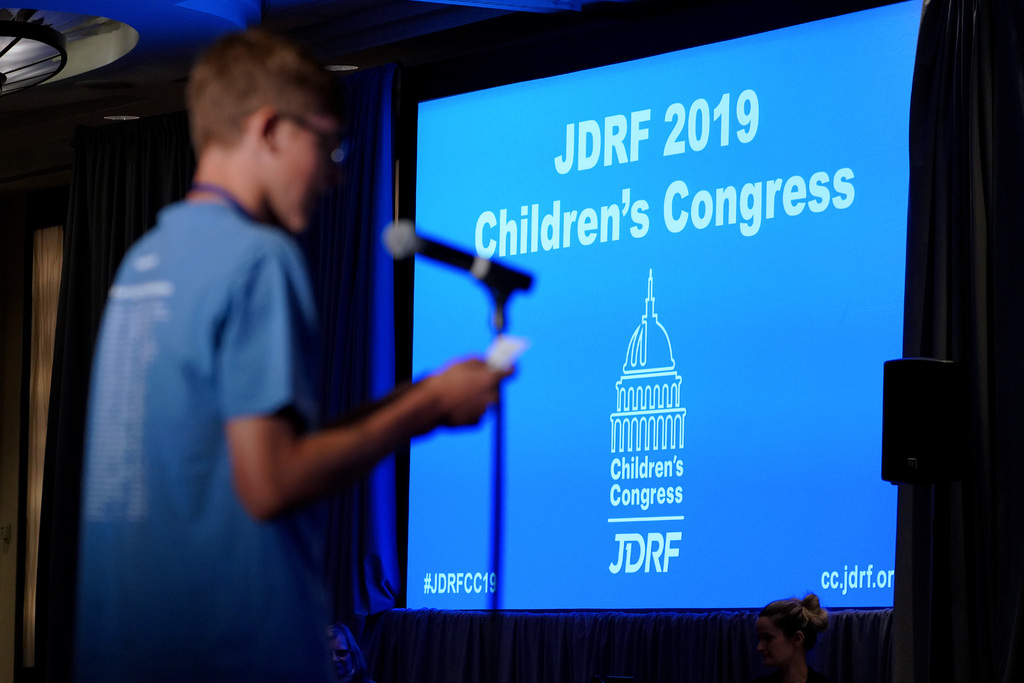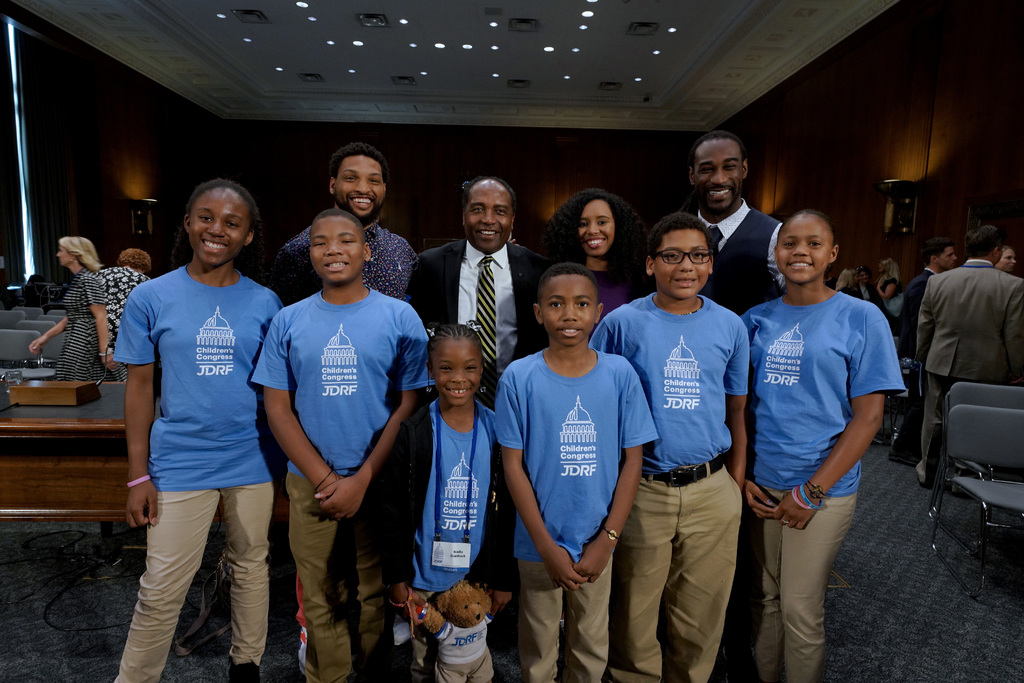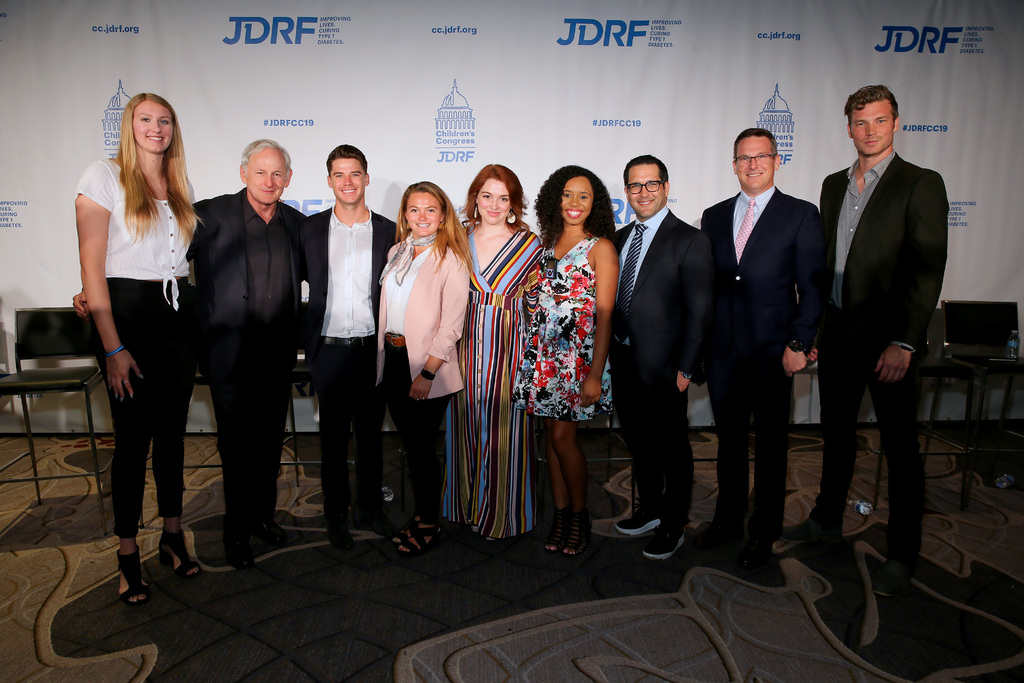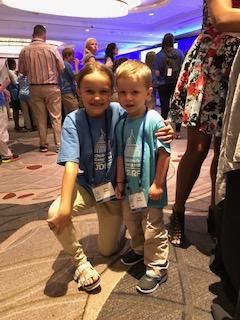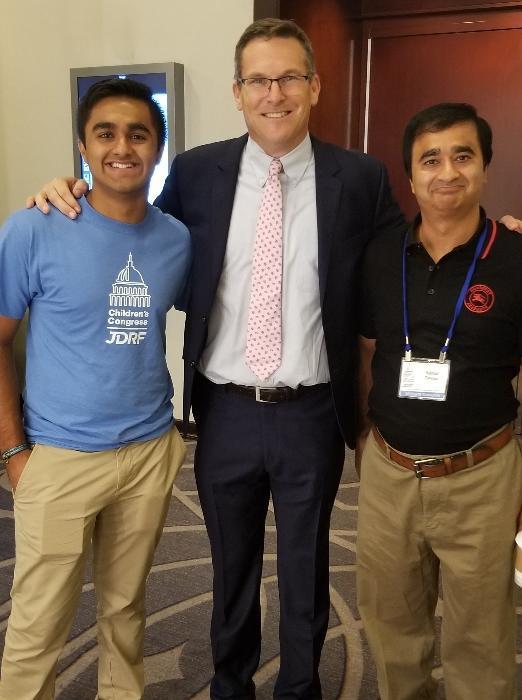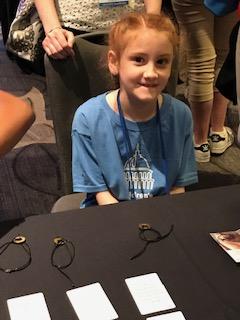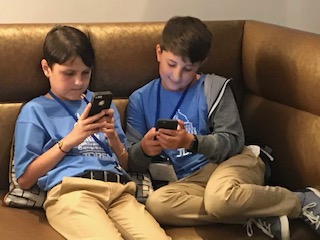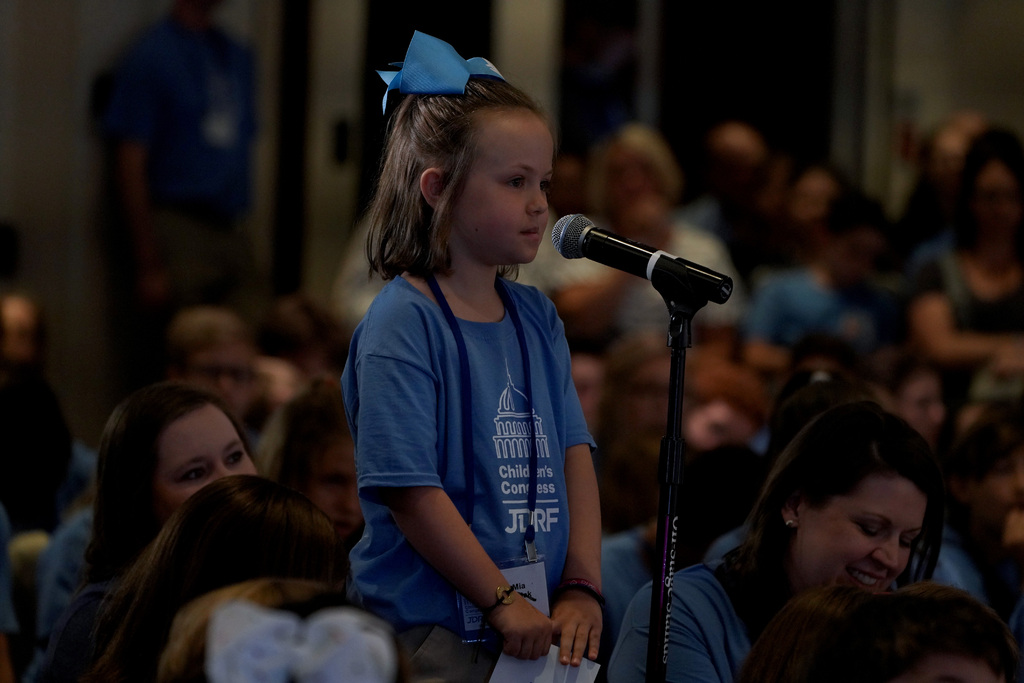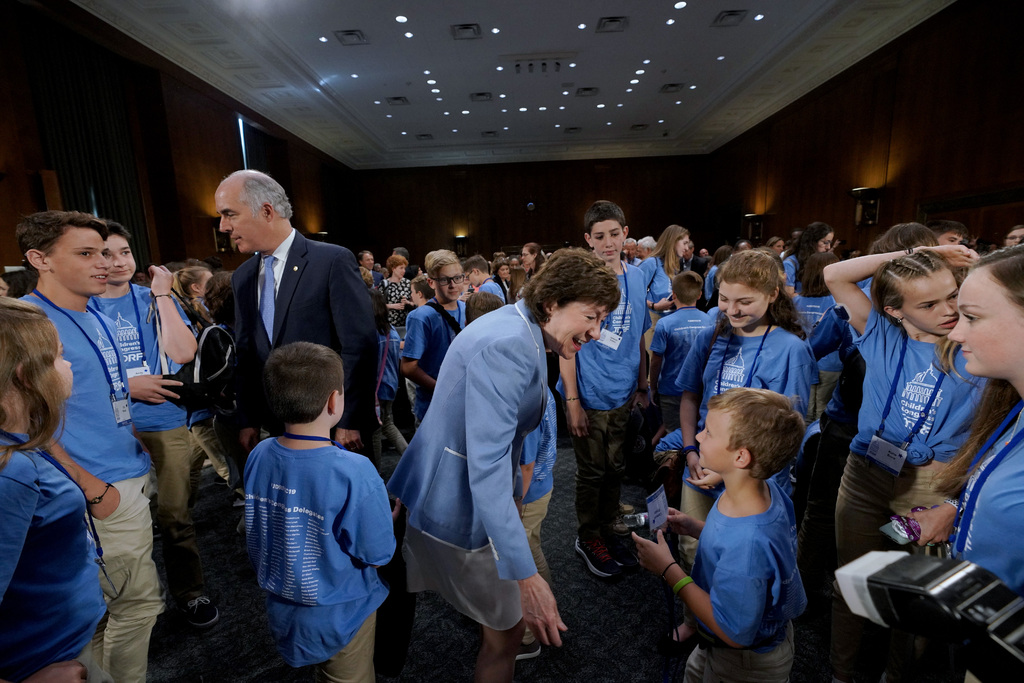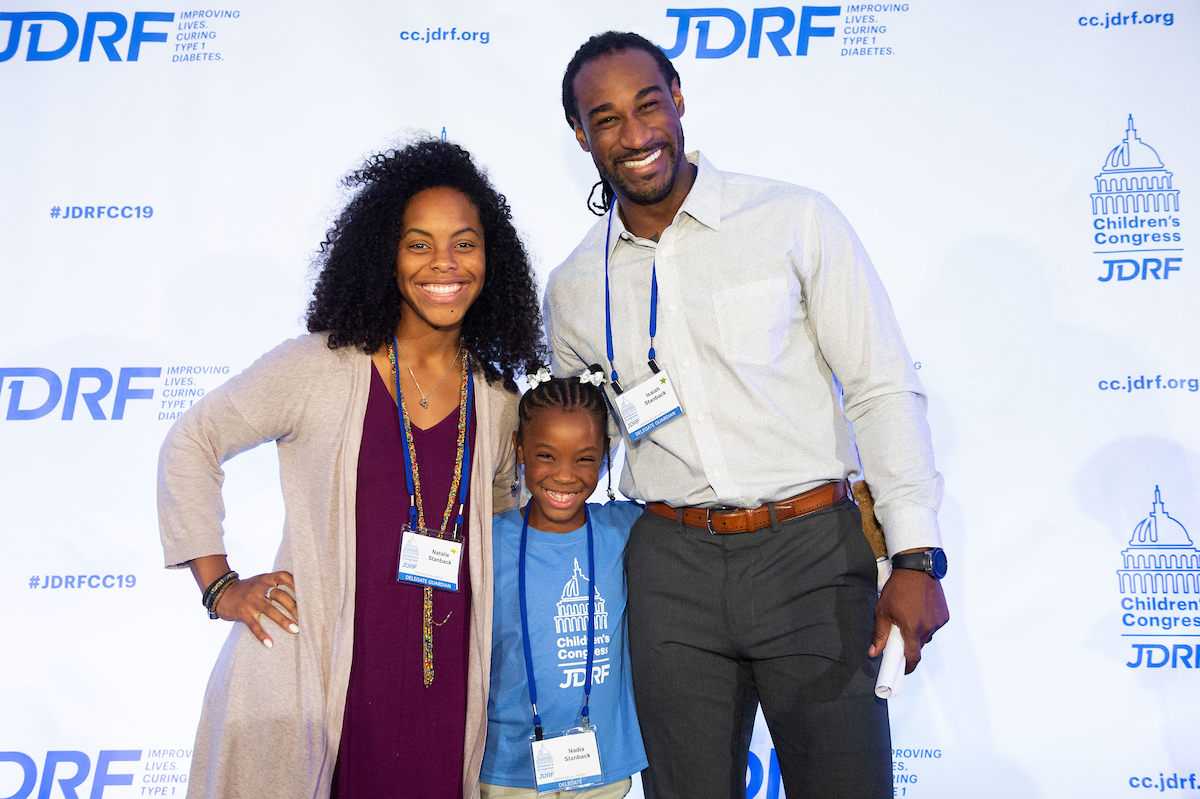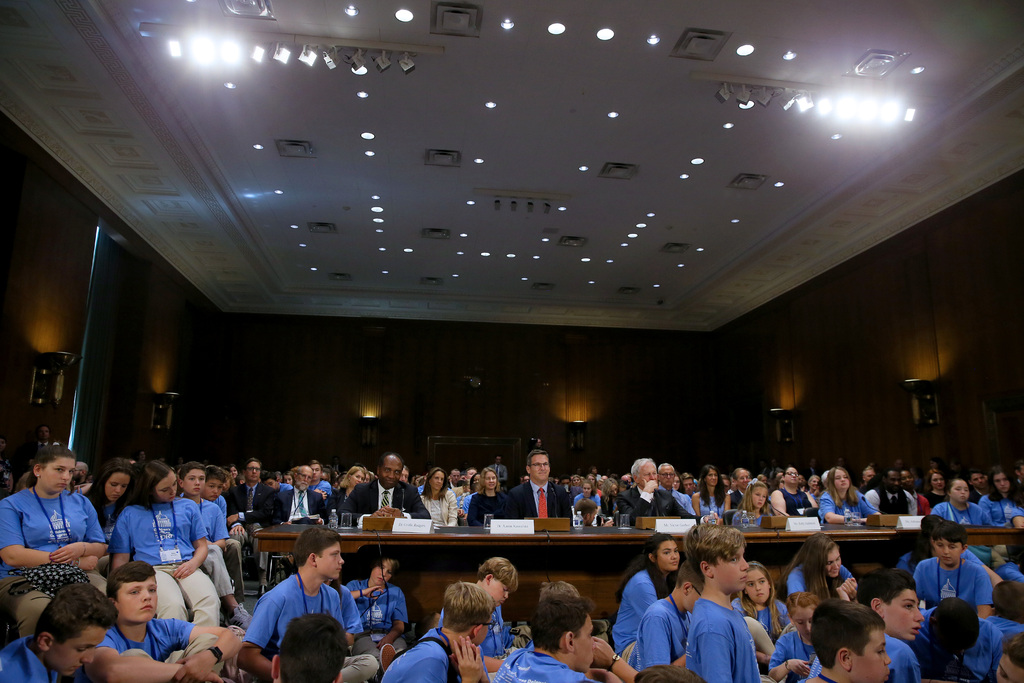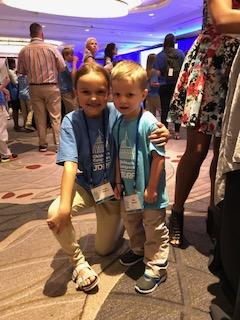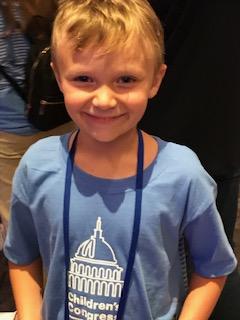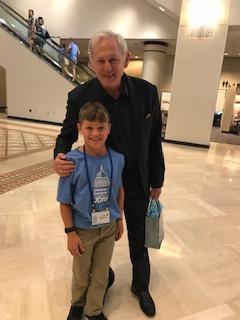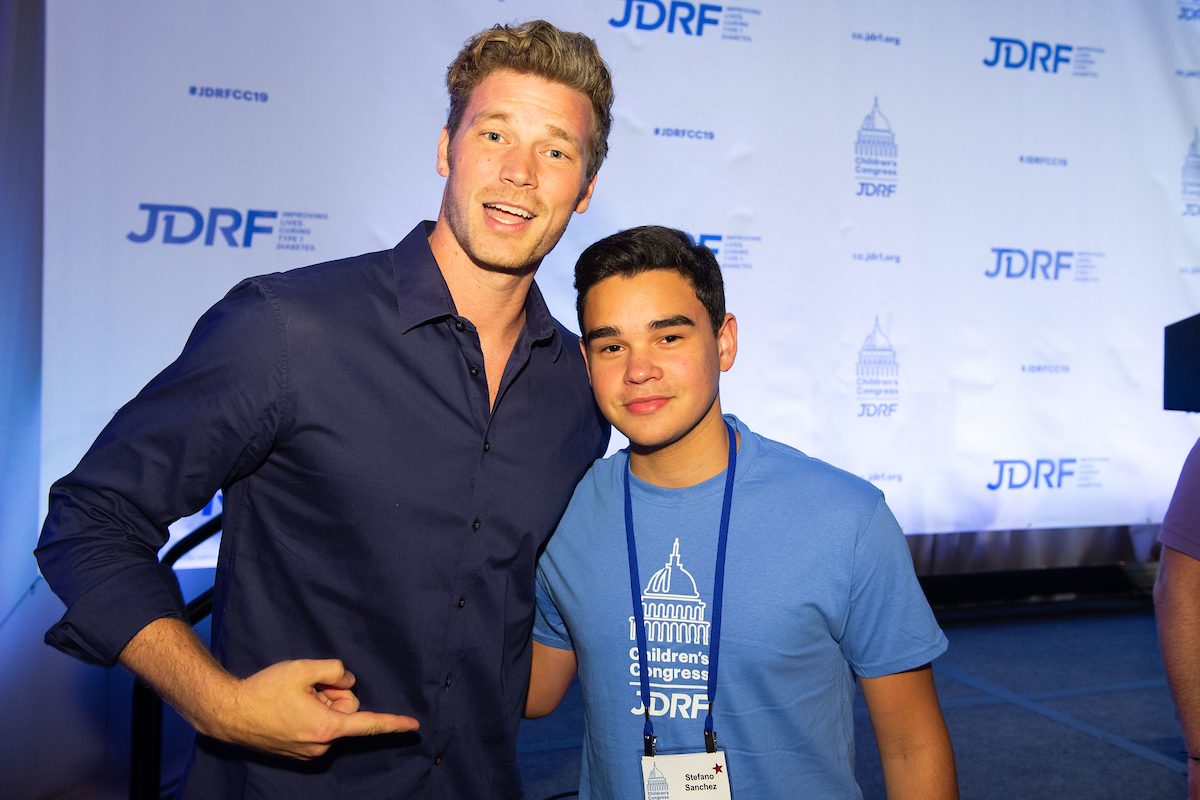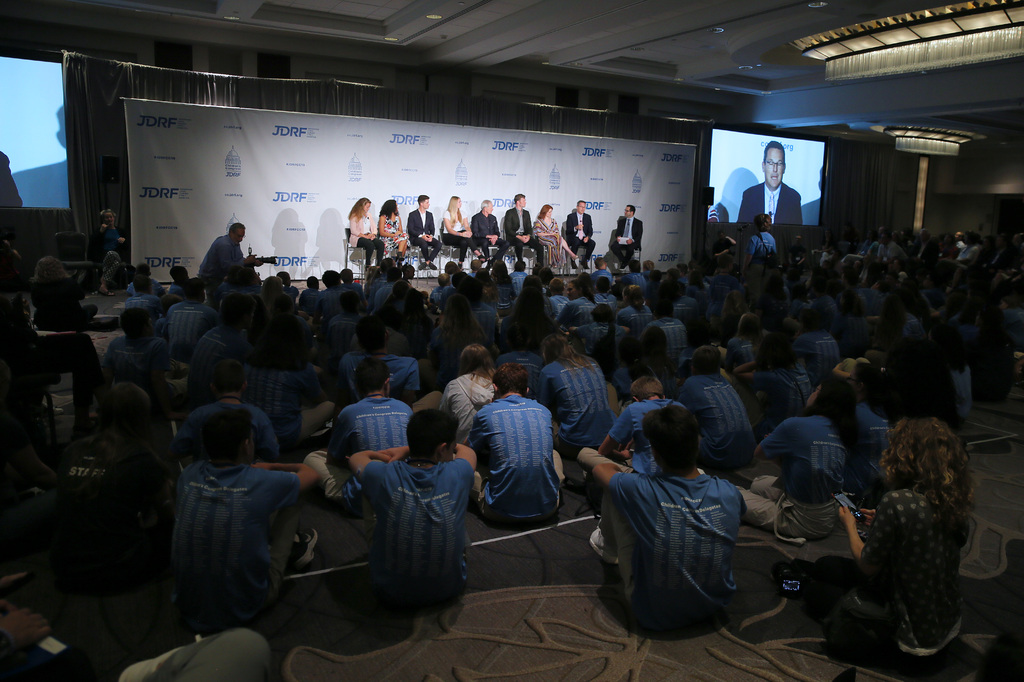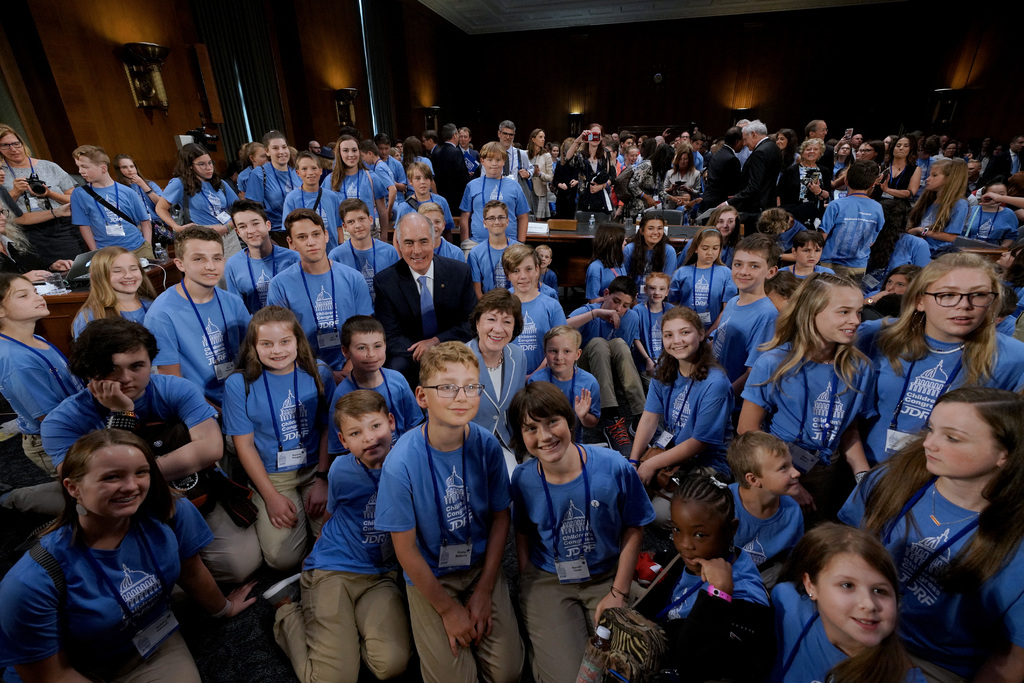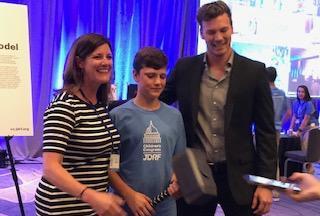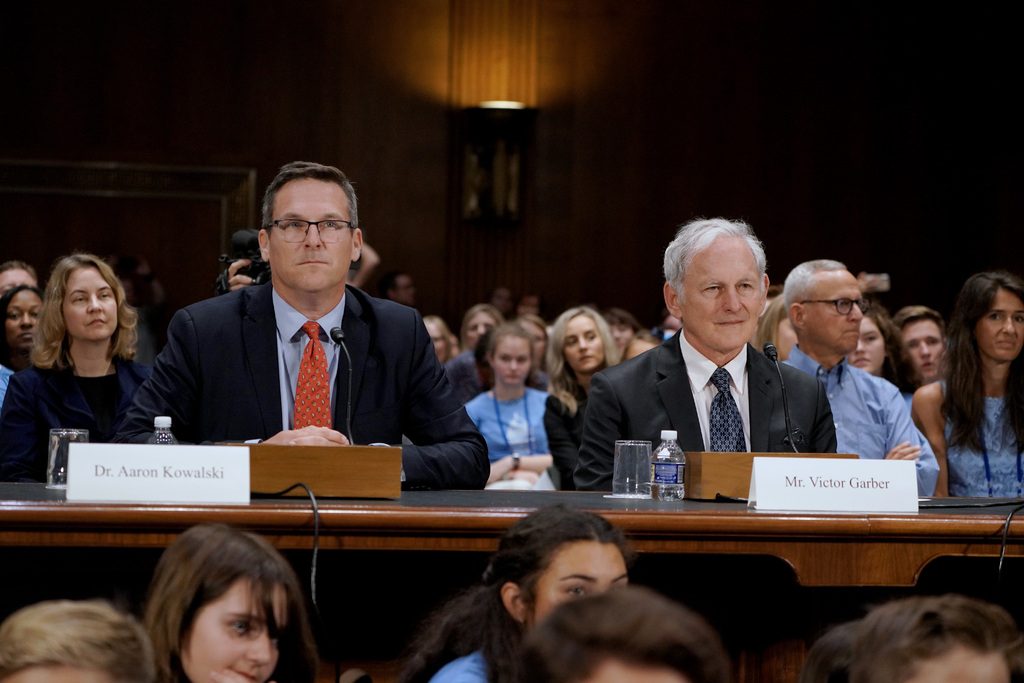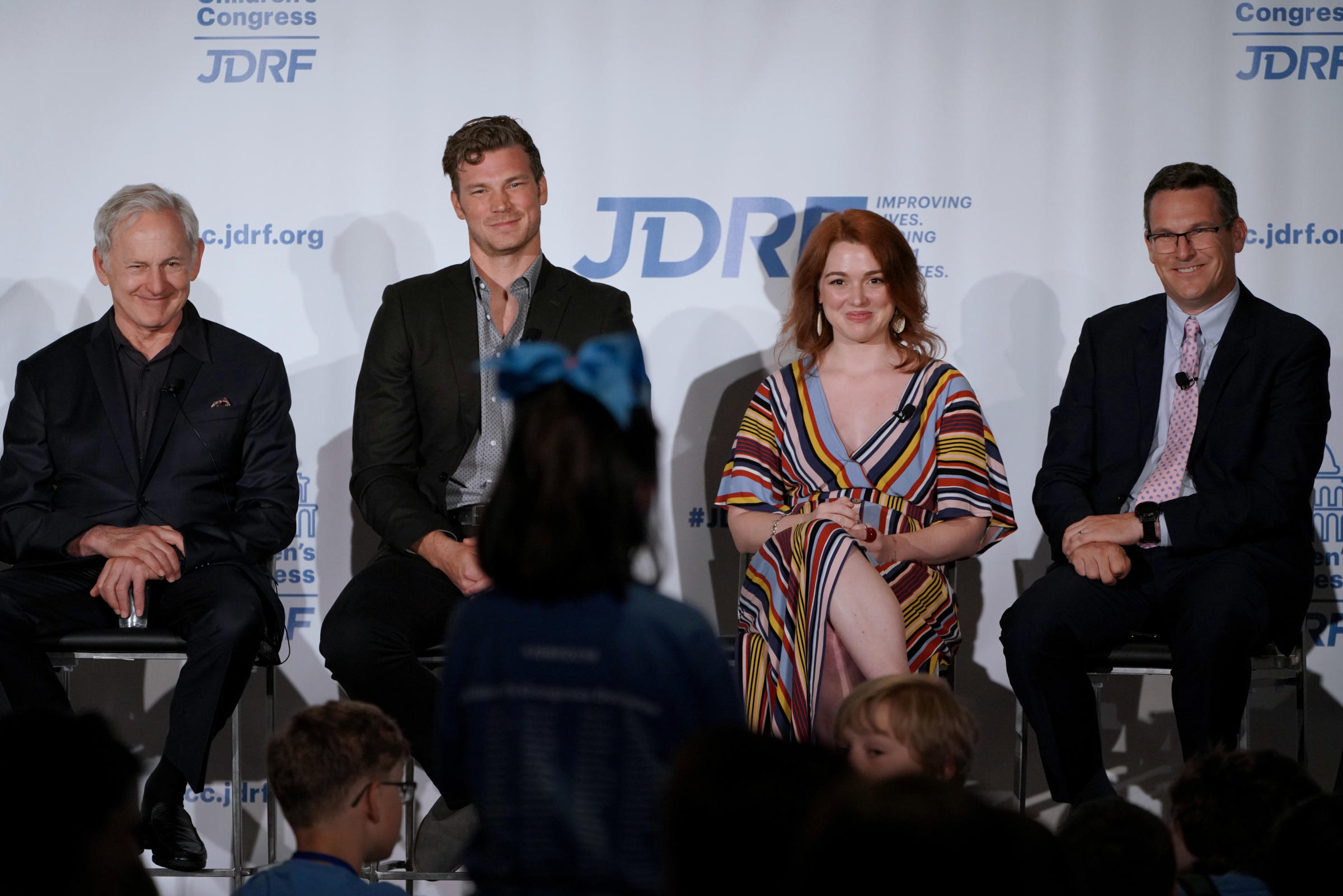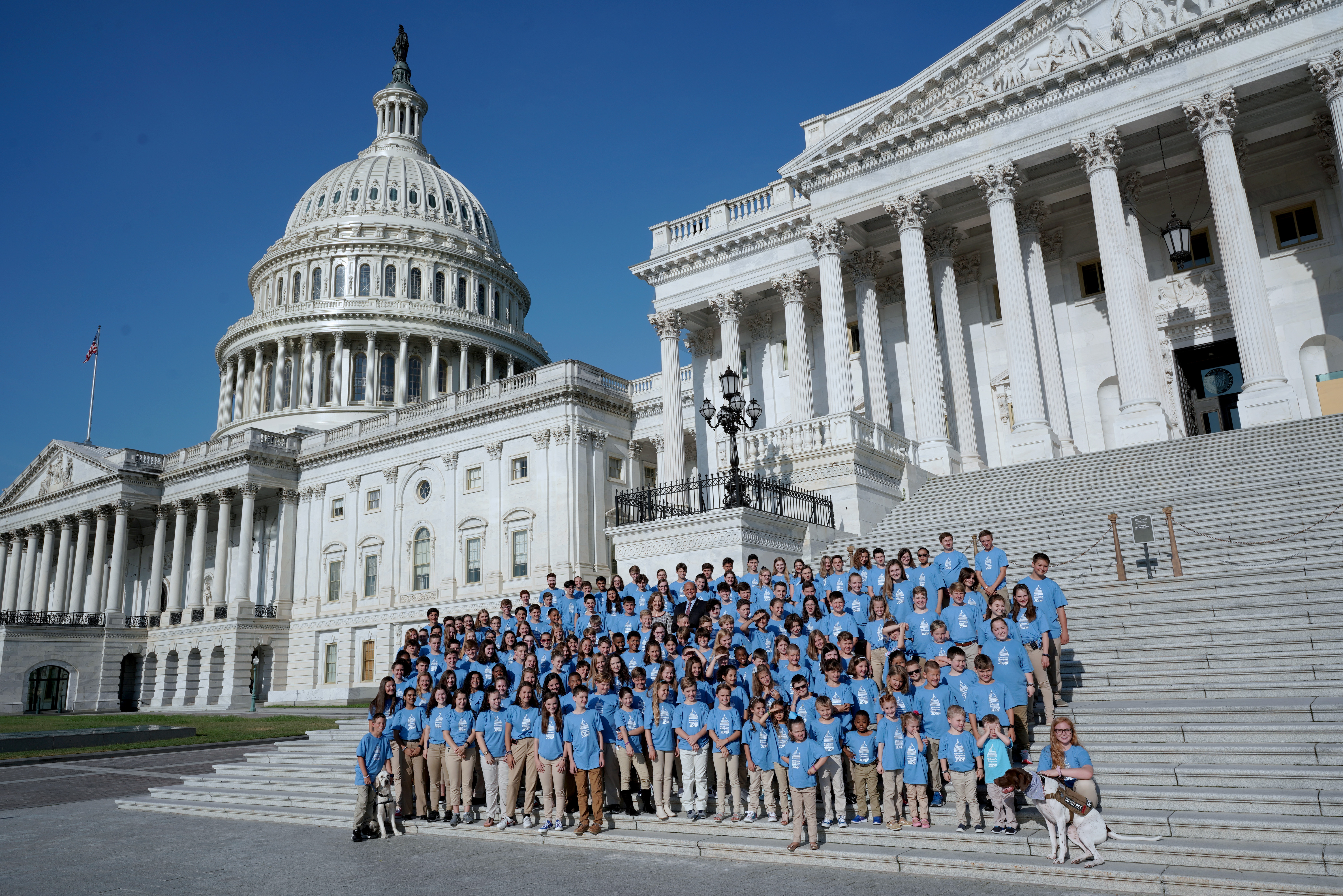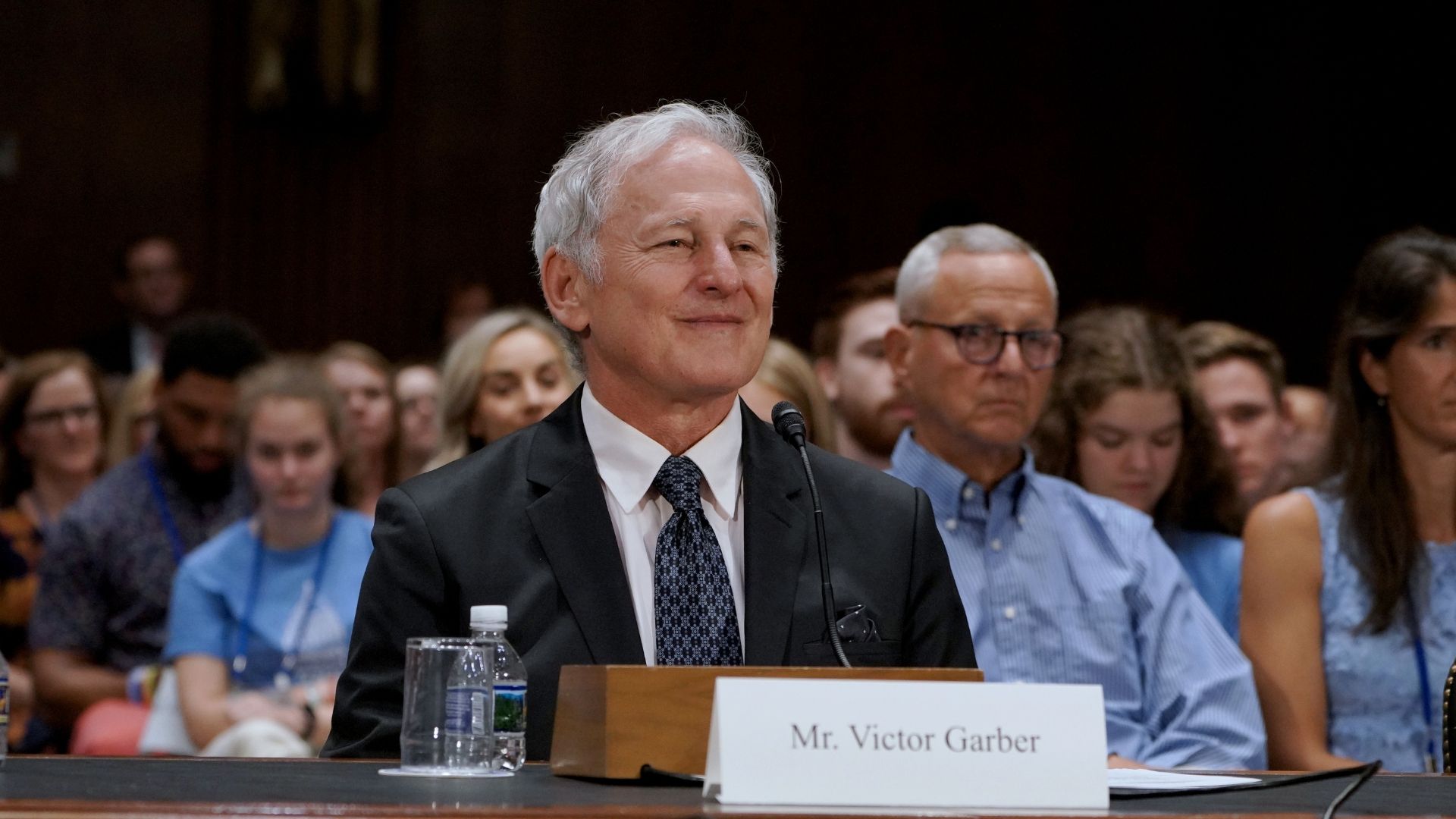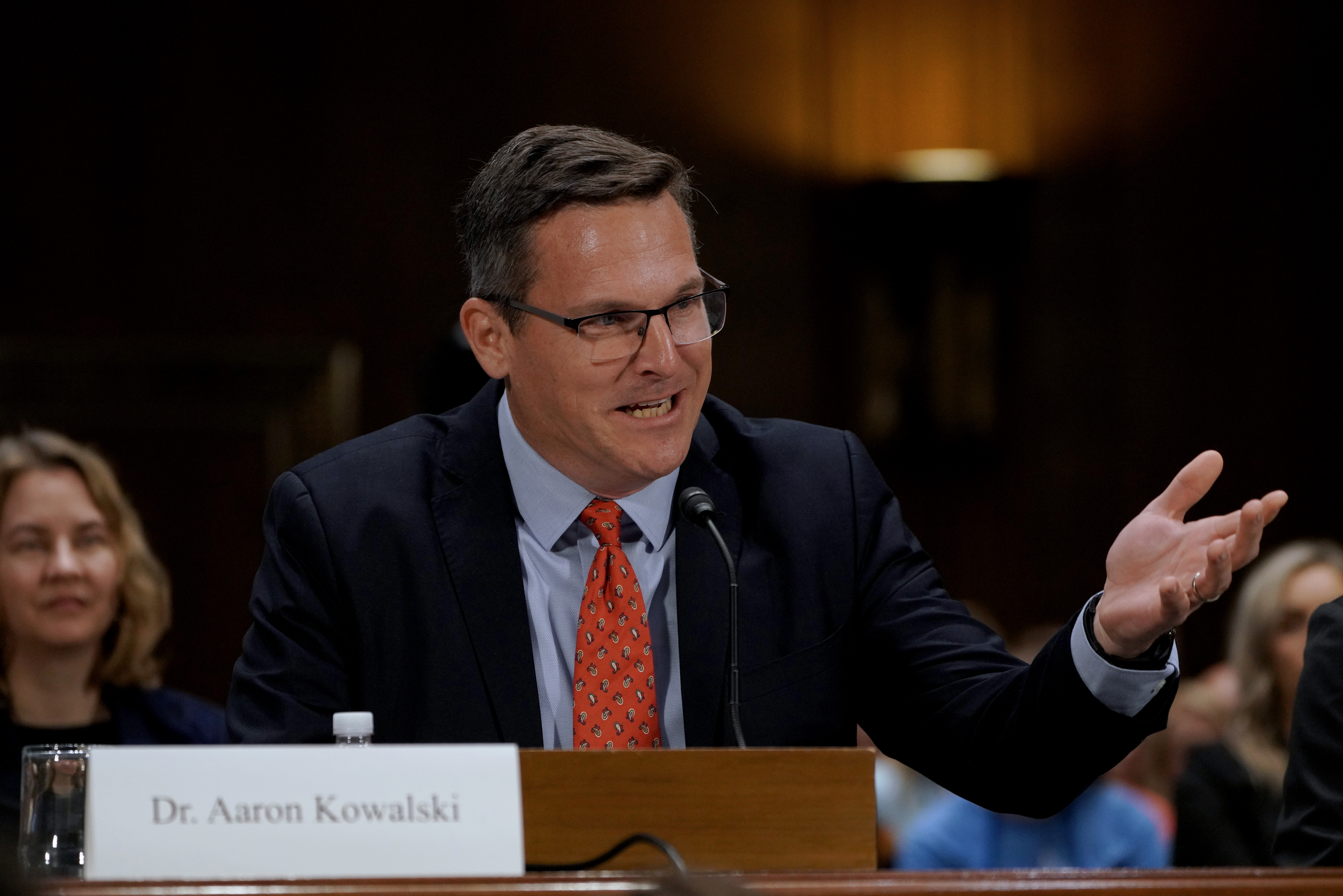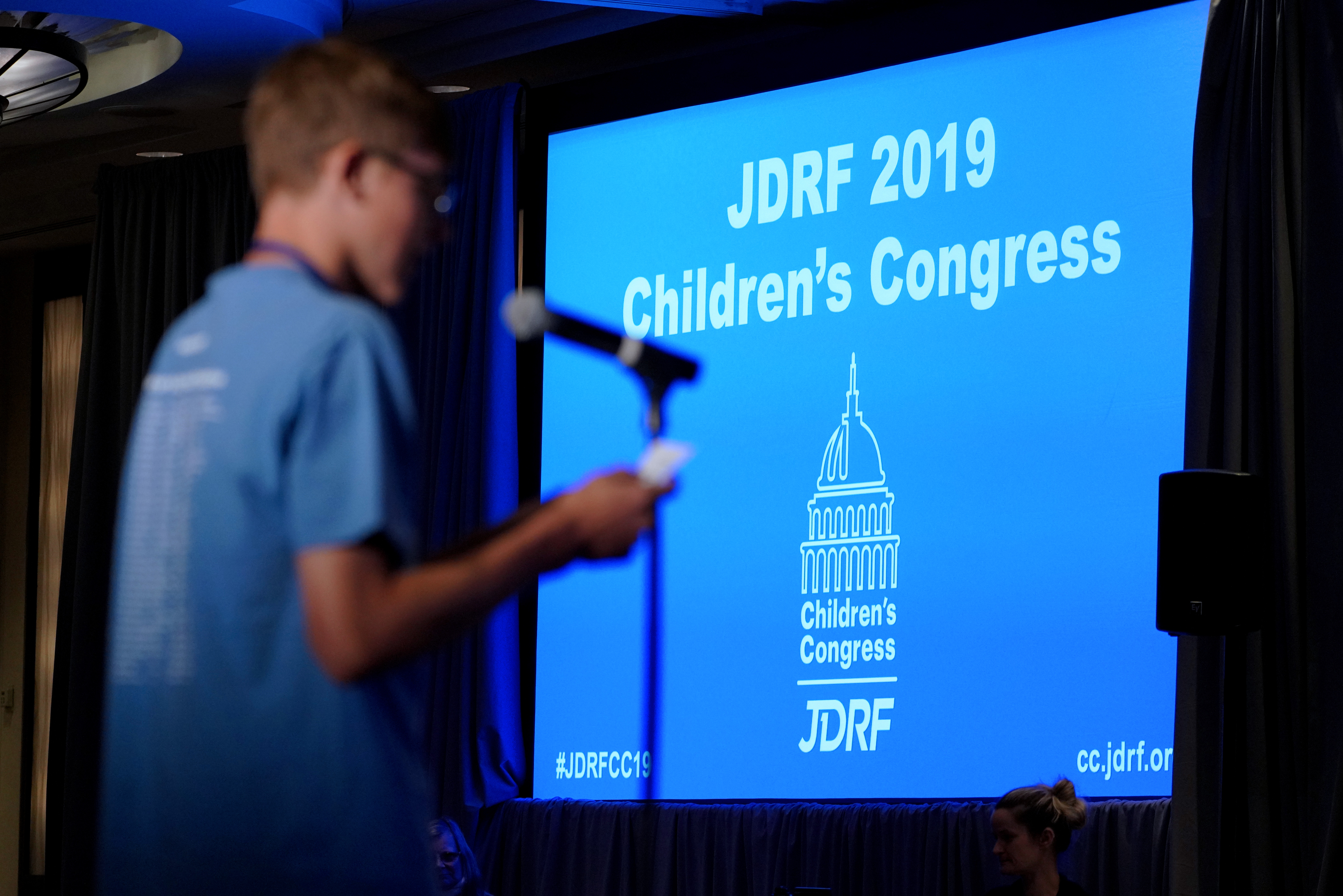Pictured above (L-R): Kabir Dewan, Breakthrough T1D CEO Aaron Kowalski, Ph.D., and Kabir’s father Kamal Dewan at the Breakthrough T1D 2019 Children’s Congress
Kabir Dewan is a second-year Morehead-Cain Scholar studying biomedical engineering, neuroscience, and chemistry on the pre-med track at the University of North Carolina Chapel Hill.
His journey with Breakthrough T1D began when he was diagnosed with type 1 diabetes (T1D) at age 13, after suffering a stroke due to high blood sugar. The initial shock was soon replaced by a surprising feeling of relief. “I realized that the diagnosis was a blessing in disguise because I finally figured out what was wrong with me and could live a healthier, more fulfilling life,” he said.
Breakthrough T1D reached out to his family with a Bag of Hope and “warm words from volunteers who offered support and advice,” Kabir remembered. The sense of community he felt with Breakthrough T1D led to avid volunteering, including roles as the North Carolina Director of Teen Outreach, and Vice President and President of the North Carolina Youth Advocacy Team.
An Empowering Experience
In 2019, Kabir was selected as a Breakthrough T1D Children’s Congress (CC) Delegate. In addition to meeting his U.S. Senators and Representative from North Carolina, as well as fellow Delegates and celebrities with T1D, Kabir delivered an impactful speech thanking the CC corporate sponsors.
“The receptiveness of legislators and aides on Capitol Hill was very inspiring,” he said. “They reassured me that they were willing to make legislative changes to fund research and get us closer to a cure.”
Elena Purdy, Senior Manager of Breakthrough T1D Grassroots Advocacy, said the empowerment Kabir felt is shared by many. “The Delegates leave the event knowing they can do anything they set their minds to,” she said. “It’s just amazing to witness year after year.”
Breakthrough T1D reached out to his family with a care kit and “warm words from volunteers who offered support and advice,” Kabir remembered. The sense of community he felt with Breakthrough T1D led to avid volunteering, including roles as the North Carolina Director of Teen Outreach, and Vice President and President of the North Carolina Youth Advocacy Team.

Giving a Face to T1D
Since 1999, the Breakthrough T1D Children’s Congress has invited youth with T1D to Washington, D.C., to meet with Members of Congress and other policy makers to educate them about what it’s like to live with T1D, and to explain why Federal support for research and affordable access to a range of T1D management tools are so critical.
“Children’s Congress gives a face to T1D,” said Purdy. “It helps our national decision makers better understand the financial, medical, and emotional costs of the disease, and what they can do to help.”
Breakthrough T1D 2023 Children’s Congress Delegates will focus on several advocacy initiatives:
- Creating significant support within Congress for a renewal of the Special Diabetes Program (SDP), which currently provides $150 million/year for T1D research through the National Institutes of Health (NIH).
- Engaging the FDA to ensure regulatory policies provide optimized pathways for approval of T1D therapies and devices.
- Ensuring T1D screening and monitoring is more widely accepted in the U.S. healthcare system.
- Accelerating progress towards more affordable insulin.
Kabir encourages anyone thinking about applying for Breakthrough T1D 2023 Children’s Congress to go for it. “It will be one of the most fulfilling and meaningful experiences you have,” he said.
Bridging T1D and Cultural Divides
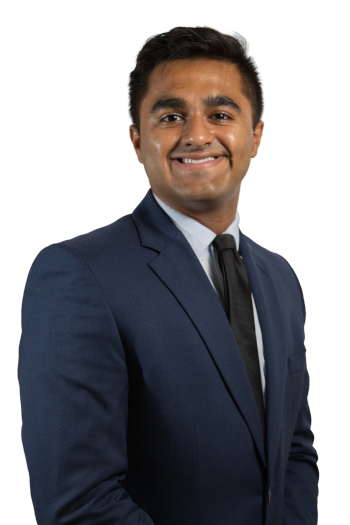 The more Kabir got involved with Breakthrough T1D, the more he wanted to educate others about T1D. While at home during the COVID-19 pandemic, he wrote a memoir, L1V1NG: A teenager’s inspiring journey with type 1 diabetes. It was a way for him to share the lessons he learned.
The more Kabir got involved with Breakthrough T1D, the more he wanted to educate others about T1D. While at home during the COVID-19 pandemic, he wrote a memoir, L1V1NG: A teenager’s inspiring journey with type 1 diabetes. It was a way for him to share the lessons he learned.
“The book details my diagnosis and, more importantly, my recovery from it to inspire other people with T1D to not give up hope in the face of adversity, and to help them find their ‘new normal’,” he said.
Kabir was also a featured panelist for a Breakthrough T1D Facebook Live event, where he discussed living with T1D as a young adult member of the Asian American Pacific Islander (AAPI) community. By sharing his story, he hopes to bridge cultural divides within the management of T1D.
“From figuring out carb counts for traditional Indian foods through trial and error to adapting insulin doses around the aspects of my cultural identity that impact my lifestyle, I want to assure other AAPI-identifying people with T1D that there are others out there with similar backgrounds dealing with the same issues,” he said.
A Bright Future
Kabir’s advocacy work didn’t end with Breakthrough T1D 2019 Children’s Congress. This year, he joined Breakthrough T1D’s new Advocates in Action Council for young adults as a member of the leadership team.
As he thinks about his future, Kabir knows Breakthrough T1D will be part of it.
“I see myself wrapping up my medical residency and beginning my career as a doctor in a hospital setting while also, as a result of the Breakthrough T1D 2019 Children’s Congress, remaining a lifelong advocate for people living with T1D.”
Breakthrough T1D 2023 Children’s Congress® applications are open now through November 30 at cc.breakthrought1d.org.
Pictured above: Berkeley Barnett and her dad, Joel Barnett, at the Breakthrough T1D 2015 Children’s Congress
Berkeley Barnett grew up in Austin, Texas, wanting to be a doctor.
She was diagnosed with type 1 diabetes (T1D) in 2004 when she was 5 years old, and the medical field always seemed like a natural fit.
“I think the reasons [for my career path] were a combination of all the time I spent in the doctor’s office as a kid and the idea of wanting to help people,” she said.
Berkeley’s family got involved with Breakthrough T1D shortly after her diagnosis—the organization played a huge role in her life. “I always viewed them as a second family,” she said. “I felt very empowered by Breakthrough T1D to not let my T1D define me.”
Berkeley’s dad, Joel, serves as a Breakthrough T1D Advocacy Team Chair (ATC) for the Southern Texas Chapter. As an ATC, he helps engage and grow advocates at the chapter level, build relationships with Members of Congress, and take action via virtual campaigns and social media. He encouraged Berkeley to use her voice on a larger scale and to apply to participate in Breakthrough T1D Children’s Congress (CC).
“We had done a Promise to Remember Me meeting with Texas Congressman Roger Williams—Berkeley loved it, and she was composed and well spoken,” he said. “He listened to her and asked questions and, when the time came, supported Breakthrough T1D initiatives. That was powerful, and the ability to go to Washington to see it in action was a once-in-a-lifetime experience.”
Giving a Face to T1D
Since 1999, the Breakthrough T1D Children’s Congress has invited youth with T1D to Washington, D.C., to meet with Members of Congress and other policy makers to educate them about what it’s like to live with T1D, and to explain why Federal support for research and affordable access to a range of T1D management tools are so critical.
“Children’s Congress gives a face to T1D,” said Elena Purdy, Senior Manager of Breakthrough T1D Grassroots Advocacy. “It helps our national decision makers better understand the financial, medical, and emotional costs of the disease, and what they can do to help.”
Berkeley was a Breakthrough T1D 2015 Children’s Congress Delegate, meeting with her U.S. Senators and Representatives to advocate for T1D research funding. “Children’s Congress will always be one of my favorite things I’ve done,” she said. “I truly cherish the memories and impact it had on my life.”
Not only did the advocacy work make an impression on Berkeley, so did the people she met. Many of her fellow 2015 CC Delegates are now her lifelong friends. “It’s so much fun to watch everyone grow up and do amazing things in the T1D world,” she said.
Breakthrough T1D 2015 Children’s Congress was also a bonding experience for Berkeley and her dad—it’s a bond that continues to this day. “He’s my guy when it comes to advocacy,” she said. “I can’t imagine advocating up on the Hill without him!”
Discovering a New Path
Berkeley was in her second year at Rhodes College in Memphis, Tennessee, still on the pre-med track, when she saw an opportunity on the Breakthrough T1D Advocacy website for an internship.
That experience changed the course of her life.
“I had always been passionate about advocacy and very interested in the government,” she said. “The internship made me realize that I could help people and make a difference, without being a doctor.”
The first person she shared the news with was her dad.
“I have a vivid memory of being surrounded by all the kids at Breakthrough T1D Children’s Congress in July 2019 and texting my dad: ‘Dad, I’m not going to medical school,’” she recalled. “His reply, of course, was ‘I know.’”
A Full Circle Moment
After graduating from Rhodes College in 2020, Berkeley got a job in Washington, D.C. as a Staff Assistant for the U.S. Senate Committee on Health, Education, Labor, and Pensions (HELP). “It was a full circle moment,” she said.
Today, Berkeley works in Washington, D.C., at a public affairs consulting firm. Her advocacy work with Breakthrough T1D hasn’t stopped, though. This year, she joined Breakthrough T1D’s new Advocates in Action Council for young adults as co-chair of the leadership team.
An Exciting Year Ahead
Breakthrough T1D 2023 Children’s Congress will take place July 9-11, 2023—the first time it is being held since 2019 due to the pandemic. The excitement is building in Breakthrough T1D Advocacy, with an event schedule already packed with educational sessions, social events, and a Senate hearing.
“Children’s Congress is truly a once-in-a-lifetime opportunity for kids with T1D,” Purdy said. “Seeing the Delegates feel a sense of empowerment and learn to use their voices is just incredible.”
Breakthrough T1D 2023 Children’s Congress Delegates will focus on several advocacy initiatives:
- Creating significant support within Congress for a renewal of the Special Diabetes Program (SDP), which currently provides $150 million/year for T1D research through the National Institutes of Health (NIH).
- Engaging the FDA to ensure regulatory policies provide optimized pathways for approval of T1D therapies and devices.
- Ensuring T1D screening and monitoring is more widely accepted in the U.S. healthcare system.
- Accelerating progress towards more affordable insulin.
Berkeley urges anyone looking to make a difference in the T1D world to apply for Breakthrough T1D 2023 Children’s Congress. “It helped shape me into who I am and inspired me to work towards making the world a better place…especially for people with T1D!”
Breakthrough T1D 2023 Children’s Congress® applications are open now through November 30 at cc.breakthrought1d.org.
Lauren Cox was 7 when she was diagnosed with type 1 diabetes (T1D). She was 12 when she finally beat her father in a game of one-on-one in the family driveway.
The Breakthrough T1D Ambassador and spokesperson said both moments shaped who she is and who she has become.
This weekend, she became the #3 pick in the first-round draft of the WNBA, selected to play for the Indiana Fever.
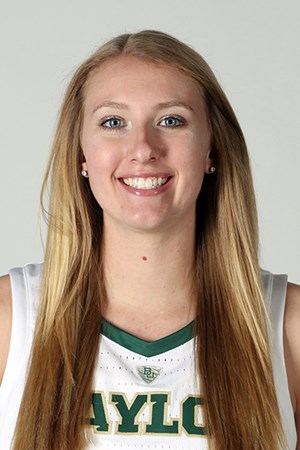 “To anyone watching the draft tonight, who sees some similarities between my story and their own: Know that I see you, back. And you’ve got this. We’ve got this,” Lauren wrote in an open letter that she shared the night of the draft.
“To anyone watching the draft tonight, who sees some similarities between my story and their own: Know that I see you, back. And you’ve got this. We’ve got this,” Lauren wrote in an open letter that she shared the night of the draft.
Lauren said she refused to use her T1D as an excuse or as a reason for sympathy. Instead, she turned it into her own personal source of focus, strength, drive and determination.
“At seven years old, more or less overnight, I went from being this little kid without a care in the world to being a person with real responsibilities. And they weren’t the type of responsibilities that I could opt out of. You take a day off from treatment….. that’s not five minutes in the timeout corner or a stern talking-to or whatever. It’s life and death. You don’t have a choice — you have to do it. You have to show up.”
The Texas native played for Baylor University as a star forward, averaging 12.5 points a game her senior year.
She also has been an active Breakthrough T1D supporter, helping educate others about T1D, raising funds for T1D research and serving as a role model for children with the disease.
This summer, she served as a Celebrity Spokesperson at Breakthrough T1D’s Children’s Congress 2019 in Washington, DC. She urged the more than 160 youth delegates to take care of their bodies and to establish a support network so that others could help when needed. Sometimes it may seem easier to try and hide the fact that you have T1D, she said. But it’s part of who you are, and you need to realize that sometimes you may need help, so let others know.
Her willingness to use her story to help others won her, and her younger sister, Whitney, this year’s Pat Summitt Most Courageous Award, presented annually by the U.S. Basketball Writers Association. Whitney, who is a freshman forward at Lubbock Christian, was diagnosed with T1D when she was 17.
This fall, the sisters played against each other in Baylor’s annual Type-1 Diabetes Awareness Game, a Breakthrough T1D fundraiser.
“I think it’s been my refusal to give in to the temptation of excuse-making that’s really given me an edge,” Lauren wrote.
Lauren has captured the hearts and attention of many both on and off the court. We congratulate her success and thank her for her support of Breakthrough T1D and the T1D community.
More about Lauren:
Her full letter: For Anyone Who’s Been Through It.
Los Angeles Times article: Baylor star Lauren Cox hasn’t let diabetes stop her WNBA dreams
WNBA.com story: 2020 WNBA Draft Prospects: Five Things To Know About Lauren Cox
Video: Lauren Cox Selected No. 3 Overall By The Indiana Fever
Breakthrough T1D, the world’s largest funder of type 1 diabetes (T1D) research, is grateful to have recently received a generous $2.8 million-dollar gift from the estate of the late Marguerite Mae Rosner of Palm Beach, Fla.
The gift will help advance Breakthrough T1D’s efforts to create a world without T1D.
Inspired by a Special Relationship
Known as “Margie” to the many people who loved her, Mrs. Rosner was a long-time supporter of Breakthrough T1D. Her goddaughter, Juliet Baum, was diagnosed with type 1 diabetes in 2014. Juliet was 6 years old at the time.
“More than anyone, Margie loved Juliet,” said Jill Baum, Juliet’s mother. “They spent hours together in Margie’s closet trying on clothes. Juliet spent every visit practicing her model walk down Margie’s hallway.”
Juliet, now a vibrant 11-year-old, has followed her godmother’s footsteps of service and active citizenship. For several years, Juliet has been an ambassador for the Breakthrough T1D Palm Beach Chapter. In 2019, she was selected as one of 160 youth from across the nation to serve as a delegate at the Breakthrough T1D Children’s Congress.
The Epitome of Kindness
Mrs. Rosner, a nurse, and her husband, Dr. Edwin Rosner, dedicated their lives to helping others, as for 47 years, they worked side-by-side in their medical practice.
Dr. Rosner passed away in 1990. Fifteen years later, Mrs. Rosner met Walter Baum, who would become her partner until his passing in 2016.
Juliet was Mr. Baum’s granddaughter. Due to health concerns, Mrs. Rosner hadn’t been able to have children of her own. Mrs. Rosner viewed Juliet’s parents—her mother Jill, and her father, Perry, who was Walter’s son—as her children. She thought of Juliet as her grandchild.
Mrs. Rosner passed away in July 2018 at the age of 97.
“Margie was the epitome of kindness, class and generosity,” added Jill. “She was funny, creative, intelligent and sharp as a tack until the end.”
On February 8, 2020, Juliet and Jill attended the Breakthrough T1D Palm Beach Chapter’s Breakthrough T1D Gem of an Evening Gala: Carnival in Venice, where the gift was announced.
“We take great pride as a family in presenting this donation to Breakthrough T1D,” said Jill. “We can think of no better legacy to leave than helping to advance care and possibly finding a cure for type 1 diabetes.”
“It is a life dream of mine to not have ‘what is my sugar’ as my waking thought, delve into an ice cream sundae without pause or hesitation, or sleep at a friend’s house without my emergency kit, glucagon and all that. I want to free my mind of all of these shackle’s as we all deserve it. Progress is being made and we need to fight until there is nothing left to fight for. So let’s go out there on Wednesday and tell our leaders what life is like right now, today. Let’s describe to them the life of tomorrow and what that means to us, our collective dream. Let’s realize that dream together. Together I know we can do it.” — Merrill Eastman, 16, New York. (Her family chaired the Breakthrough T1D 2019 Children’s Congress.)
Our Breakthrough T1D Children’s Congress Delegates have left Washington, DC. But they’ve made a lasting impression and paved a solid path forward to more success for the type 1 diabetes community.
“Thank you so much for coming,” said Susan Collins (R-ME), Chairwoman of the U.S. Senate Special Committee on Aging, and Ranking Member.
“Your personal stories really matter. They motivate Senators to get involved in the cause,” she told a Senate hearing room packed with blue Children’s Congress t-shirts. “Your passion and hope for a cure are contagious.”
Overview
More than 160 youth delegates from all 50 states and six countries gathered in the nation’s capital earlier this week for the Breakthrough T1D Children’s Congress, a bi-annual event to urge continued research funding for type 1 diabetes (T1D).
The delegates, all living with T1D — ages four to 17 — traveled to Washington for the July 8 – July 10 gathering, which was led by Children’s Congress Chair Katama Eastman and her family from New York. Katama’s daughter Merrill was diagnosed with T1D when she was 15 months old. The family, active Breakthrough T1D volunteers and advocates, host an active Walk team, attend Breakthrough T1D galas, and are donors to the T1D Fund.
Celebrity T1D role models attended the entire event, sharing powerful experiences of living with T1D with both delegates and with Congressional representatives.
“They are inspiring people, showing that we can all follow our dreams, like they did,” said 10-year-old Tyler Carcelli of Cleveland.
Children’s Congress ended with a critical and emotion-filled Senate hearing on Capitol Hill for the Special Diabetes Program (SDP), which has provided $150 million annually toward T1D research and is essential to Breakthrough T1D’s mission to create a world without T1D. The program began in 1997 and has contributed nearly $2.8 billion toward T1D research.
#1 Goal: Renew the SDP
The youth delegates and their families shared personal scrapbooks and experiences of life with T1D in 241 meetings with Congressional representatives. The delegates shared a unified message: we need a five-year renewal of SDP because the funding is changing and saving lives. So far, 68 Senators and 378 Representatives have signed letters of support for SDP, and a five-year renewal is contained in two pieces of proposed legislation — Senate Bill 1895 and House Bill 2668.
“The Special Diabetes Program is making a tremendous difference in our lives and in our hopes for the future,” Breakthrough T1D President and CEO Aaron J. Kowalski, PhD., said at the Senate hearing, hosted by the Special Committee on Aging and led by Committee Chairman Susan Collins (R-ME) and Ranking Member Bob Casey (D-PA).
Dr. Kowalski testified that strong bipartisan support for SDP has led to numerous research breakthroughs, transforming the lives of people with T1D and bringing “us closer to our ultimate goal of curing this disease.”
Affordability
The delegates also urged Representatives and Senators to make insulin more affordable, highlighting that in Pennsylvania, the cost of insulin is fully covered as a life-sustaining medicine by Medicaid.
They also urged the elimination of rebates, which make up approximately 70% of insulin costs.
The delegates, advocating for the entire T1D community, also sought support from congressional representatives for:
- Strong annual funding for the National Institutes of Health (NIH) and the Food and Drug Administration (FDA).
- Breakthrough T1D’s advocacy priorities:
o Access to high quality, affordable health insurance
o Preserving protections for pre-existing conditions, like T1D
o Allowing kids to remain on their parents’ health plans until age 26
o Prohibiting yearly and lifetime dollar limits for essential health benefits
The Senate Hearing
Powerful testimony about the day-to-day challenges of living with T1D was the highlight of the Senate hearing, “Redefining Reality: How the Special Diabetes Program Is Changing the Lives of Americans with Type 1 Diabetes.”
The hearing featured the testimonies of actor Victor Garber, who was diagnosed with T1D at age 11; youth delegates, Ruby Anderson, 9 of Yarmouth, Maine, and Adriana Richard, 16, of Milton, Pennsylvania; Griffin Rodgers, director National Institute of Diabetes and Digestive and Kidney Diseases (NIDDK); and Dr. Kowalski, PhD, Breakthrough T1D President and CEO.
“Thanks in large part to the Special Diabetes Program, living with type 1 diabetes today is very different than back when I was a teenager,” Garber said.
Breakthrough T1D meets with the FDA
In addition to meeting with Congress, three teenage delegates with experience in T1D clinical trials traveled with Breakthrough T1D leadership to Silver Spring, Maryland, to meet with Food and Drug Administration (FDA) officials. The FDA plays a critical role in the regulatory process by reviewing and approving new clinical trials and therapies. The Breakthrough T1D delegation thanked the FDA for its partnership and dedication to continued innovation that can improve lives today while research works on cures for tomorrow.
T1D Role Models
In addition to meeting with their members of Congress, the delegates also met an impressive panel of T1D role models. At a Town Hall, hosted by ESPN Reporter Adam Schefter, delegates asked the T1D role models about what their experiences living with T1D while also succeeding as an actor, NASCAR driver, scientist, and more.
The work continues
Our work at Breakthrough T1D is not over. Breakthrough T1D needs your help to build on the progress made at Children’s Congress. Sign up to become an advocate today, respond to alerts, and ask your friends to share in our mission and advocate for all people with T1D.
Breakthrough T1D 2019 Children’s Congress was supported in part by:
- Premier Sponsor – Novo Nordisk
- Supporting Sponsors – Delta Tau Delta, Merck, PhrMA
- Elite Partners – Ford, Marshall’s
For more Breakthrough T1D 2019 Children’s Congress Coverage, check out the links below:
- Press Release
- Key Media Coverage:
o Washington Post’s Reliable Source
o Bloomberg Law (“Research at Risk”)
o CSPAN (“Actor Victor Garber Tells Congress to Tackle High Cost of Insulin”)
What would intimidate even the most seasoned speakers had little impact on the three teens who met with the Food and Drug Administration (FDA) on behalf of Breakthrough T1D and the type one diabetes (T1D) community.
The teens have already been through so much. Sharing their stories of living with T1D, they said, is easy in comparison.
“Having something you can’t control hold you back is pretty miserable,” said Hayden Kirk, 16, of Atlanta. “But when you talk about advances and work happening for a cure, that’s nice—that’s when you see hope in everyone’s eyes.”
Hayden and two other youth delegates attending Breakthrough T1D Children’s Congress 2019 thanked members of the FDA for reviewing and approving both clinical trials and new therapies for T1D.
“Each of these delegates has been personally touched by the work you do here,” Breakthrough T1D CEO and President Aaron J. Kowalski, Ph.D., told the panel. “We are here to thank you for your support.”
Breakthrough T1D frequently meets with the FDA to share the impact that key advances FDA is reviewing can have on the T1D community, explain the complexities of the disease and the need for innovation to improve lives today while research aims for cures for tomorrow.
Hayden Kirk shared with the FDA staff his experience of participating in a clinical trial of an artificial pancreas system and of using the new technology now on a daily basis.
“The new technology makes my life a whole lot easier, especially when doing sports,” Hayden shared.
Elizabeth Link, 16, of Inver Grove Heights, Minnesota, told the group that she agreed to participate in a two-year clinical study of an immune therapy when she was newly diagnosed because she knows that the studies are critical to advancing science and finding cures.
“Participating in the study gives me hope that cures are in the near future,” Elizabeth said.
Sam Southwick, 16, of Sioux Falls, South Dakota, talked about the struggles of managing T1D while still pushing to be an athlete, student and teenager, and also participating in a clinical trial that used his own cells to try to preserve the function of insulin-producing beta cells.
“I want to do my part by participating in research to help myself and others. I don’t want to live with this disease forever,” Sam said.
Breakthrough T1D hosts Children’s Congress every two years, bringing youth delegates and celebrity role models from all over the country and world to advocate for Congressional support for T1D research and support. This year, the ask is for Congress to renew the Special Diabetes Program, which funds $150 million in research each year, while also thanking officials like those at the FDA for their work in advancing critical research and approving innovative therapies.
Take a minute to hear two of the delegate’s stories through their own videos.
https://www.youtube.com/watch?v=G4lUsXEBoC8
In a packed U.S. Senate hearing room, Breakthrough T1D Children’s Congress Delegates, medical leaders, and celebrities today shared the personal, critical need for ongoing federal funding of research for type 1 diabetes (T1D).
The two senators leading the hearing responded with promises to fight on behalf of everyone in the hearing, and the entire T1D community they came to advocate for.
The Senate hearing was hosted by the Special Committee on Aging, led by Senator Susan Collins (R-ME), Chairwoman of the U.S. Senate Special Committee on Aging and co-chair of the Senate Diabetes Caucus, and Ranking Member Robert Casey (D-PA).
“By the end of September, Congress must pass legislation to reauthorize the Special Diabetes Program,” which has historically driven $150 million toward T1D research annually, said Collins.
“Securing stable funding for medical research is only one part of the agenda,” said Casey. He stressed the need for Congress to also help ensure that families can afford the insulin, devices and drugs needed to manage T1D every day.
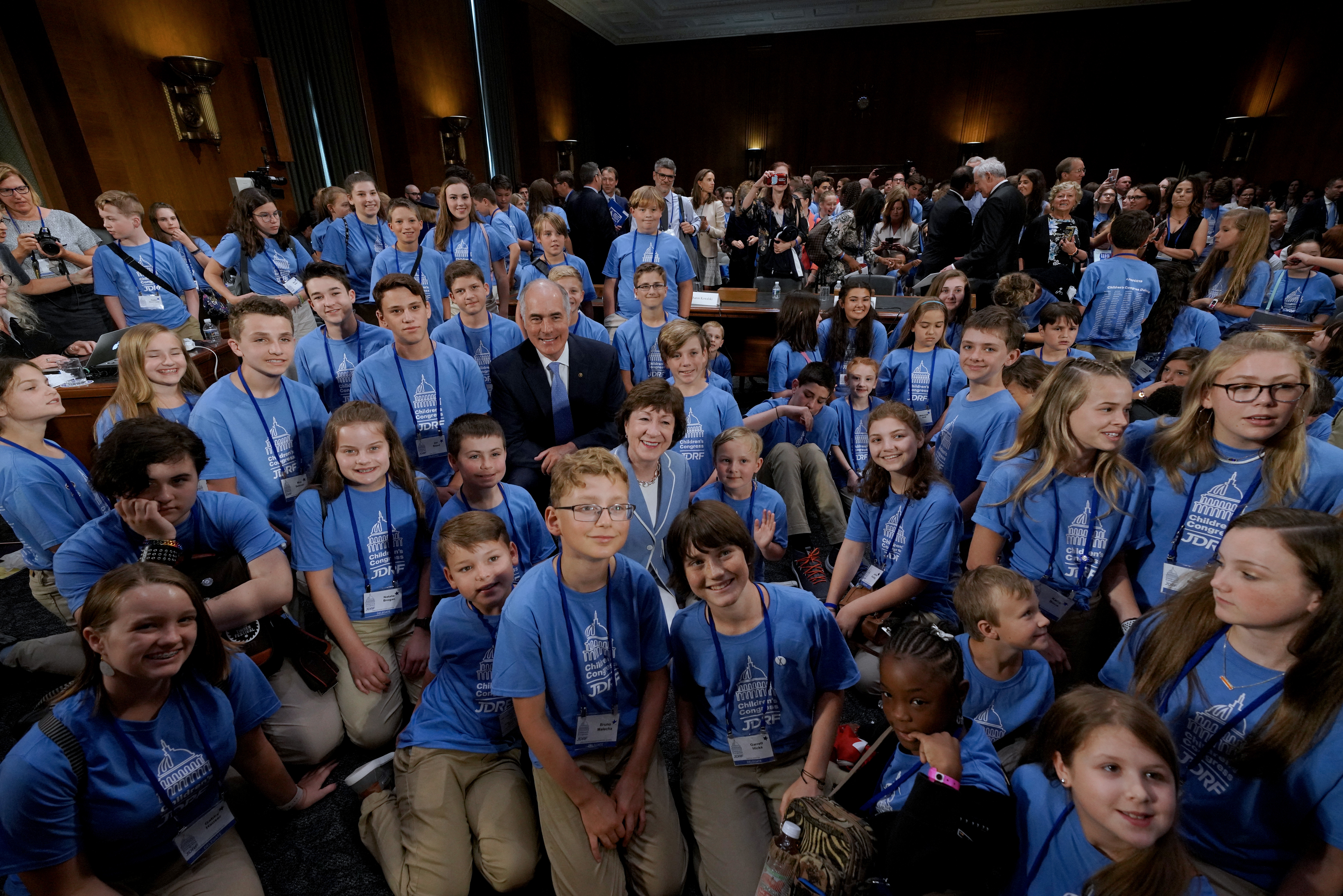
U.S. Senators Susan Collins and Robert Casey pose with Breakthrough T1D Youth Delegates (Photo by Jemal Countess/Getty Images for Breakthrough T1D)
The Senate hearing featured testimonies by actor Victor Garber, who was diagnosed with T1D at age 11; youth delegates Ruby Anderson, 9, of Yarmouth, Maine, and Adriana Richard, 16, of Milton, Pennsylvania; Griffin Rodgers, M.D., national director, National Institute of Diabetes and Digestive and Kidney Diseases (NIDDK); and Breakthrough T1D’s President and CEO Aaron J. Kowalski, Ph.D.
The hearing was part of the three-day Breakthrough T1D Children’s Congress 2019, which brought more than 160 youth delegates from around the world and celebrity role models to Washington, DC, to advocate for ongoing research funding and coverage, affordability and choice of therapies to help those with T1D stay healthy until there is a cure.
Following the hearing, the delegates met with Senators and Representatives from their home states to share their stories and make a personal ask for ongoing support.
A replay of the Senate hearing can be viewed here.
View a media release on the hearing here.
Highlight comments made during the hearing are below.
Ruby Anderson, 9, Maine
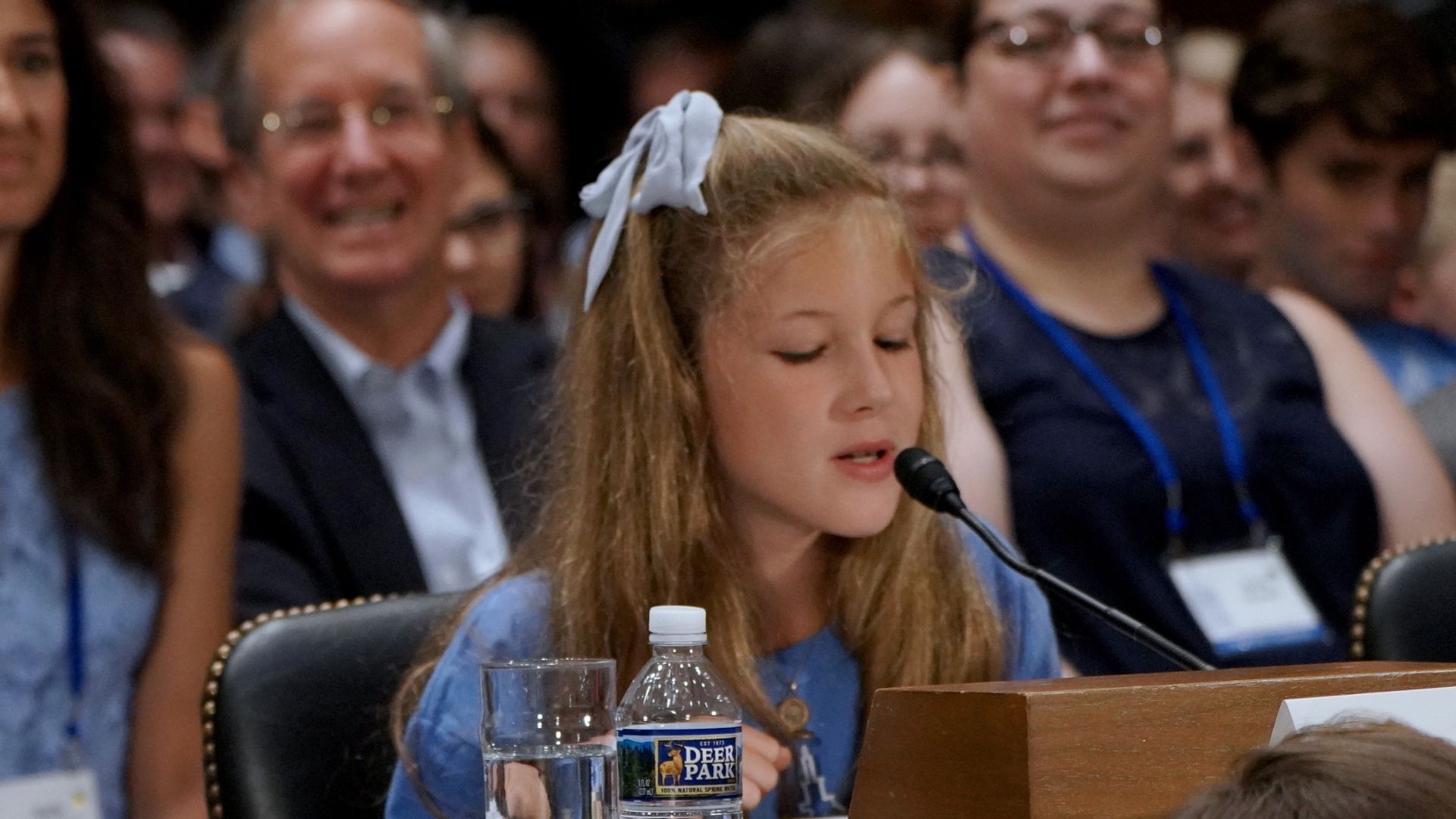
Breakthrough T1D Youth Delegate Ruby Anderson (Photo by Jemal Countess/Getty Images for Breakthrough T1D)
“Type one diabetes is really hard to manage . . . I wish my type one diabetes would just disappear.
“And Senators, I don’t want my brother or sister to get T1D.
“We need more research to find a cure. We need even better devices. And we need to figure out what causes T1D so we can stop it. All of the kids here at Breakthrough T1D’s Children’s Congress need you to continue to support us.
“When I grow up, I want to be a scientist—partly because T1D research is so important. And if they haven’t found a cure for the disease by then, I will. And when we have a cure, I’m going to have a party and invite everyone in the whole entire world. Senator Collins, you will be first on my list.
“Thank you for listening and for all you do for kids like me.”
Adriana Richard, 16, Pennsylvania
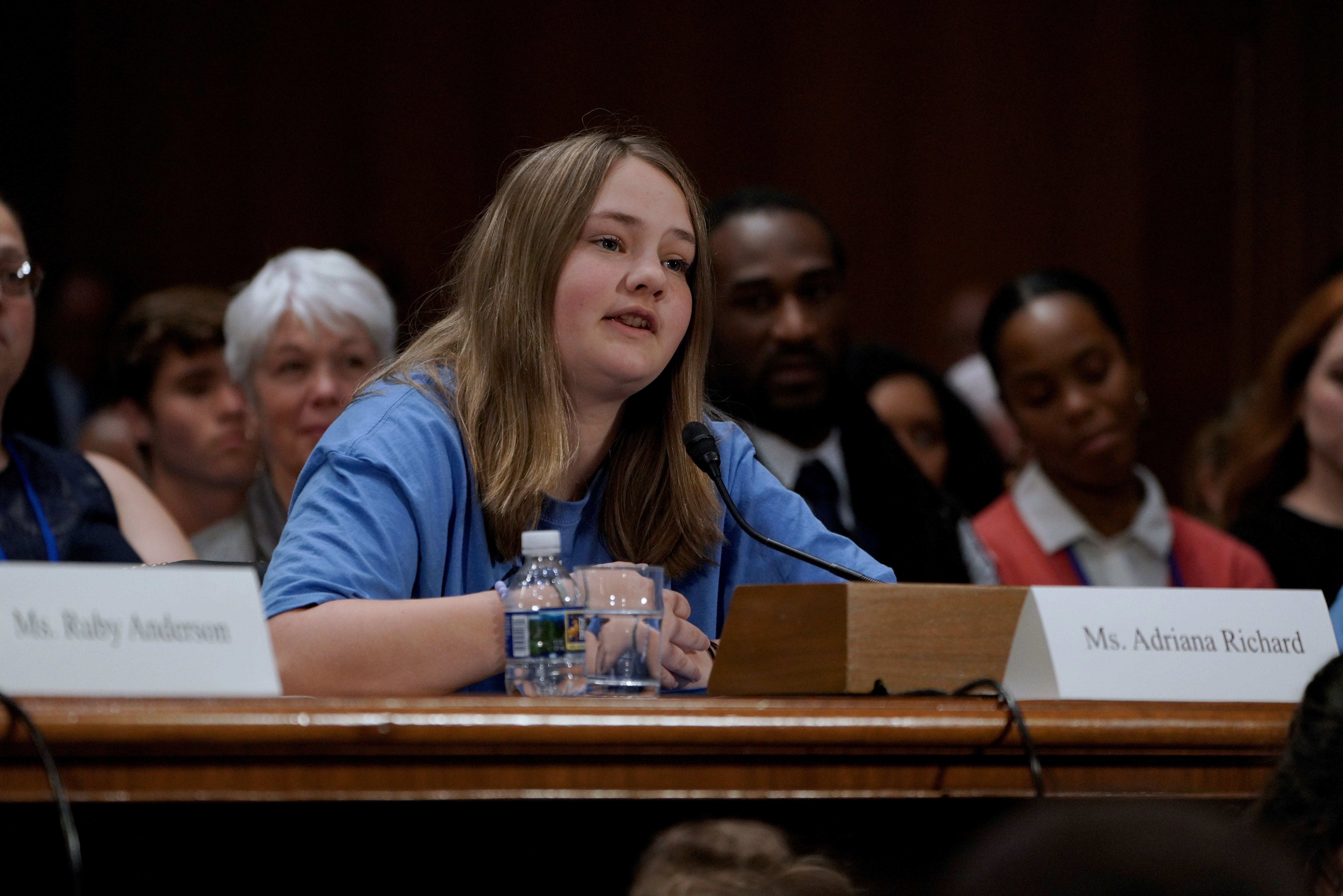
Breakthrough T1D Youth Delegate Adriana Richard (Photo by Jemal Countess/Getty Images for Breakthrough T1D)
“I am here today to share my voice as an advocate for people with T1D because I have been motivated by the struggles I have experienced.
“I was diagnosed . . . when I was 5 years old. All I remember . . . is that my parents were scared for me.
“My life with T1D is easier with . . . technology, which is thanks in part to funding from the Special Diabetes Program.
“We are so close to finding cures for diabetes and if we stop research now there is no way we will ever find it. We need the SDP for research to help our everyday lives with T1D—to help scientists and engineers invest in things like CGMs that have changed my life.
“I am grateful that as a resident of Pennsylvania that the cost of my insulin is zero dollars because it’s fully covered as a life-sustaining medicine under Medicaid.”
Victor Garber, Actor, living with T1D since age 11
“I remember vividly that my diagnosis was a traumatic event for my family . . . I have a distinct memory of [my mother] standing on the porch as my father drove me to the doctor. The fear and desperation in her eyes remain an indelible image in my mind.
“Whenever I meet the mother of someone with type 1 diabetes, I am brought back to that moment, to that confusion, panic and uncertainty, which is why I am so determined to do everything I can to help find a cure for this disease.
“I’m so fortunate to be able to afford insurance that allows me to choose the best insulin pump and glucose monitor for my specific lifestyle. This should be everyone’s right.
“I am lucky to have good health insurance, but I am still paying far more than I should be, for the life-saving drug that I would die without. Senators, this is simply unacceptable. Dealing with type 1 diabetes is already hard enough.”
Griffin P. Rodgers, M.D., National Director, NIDDK
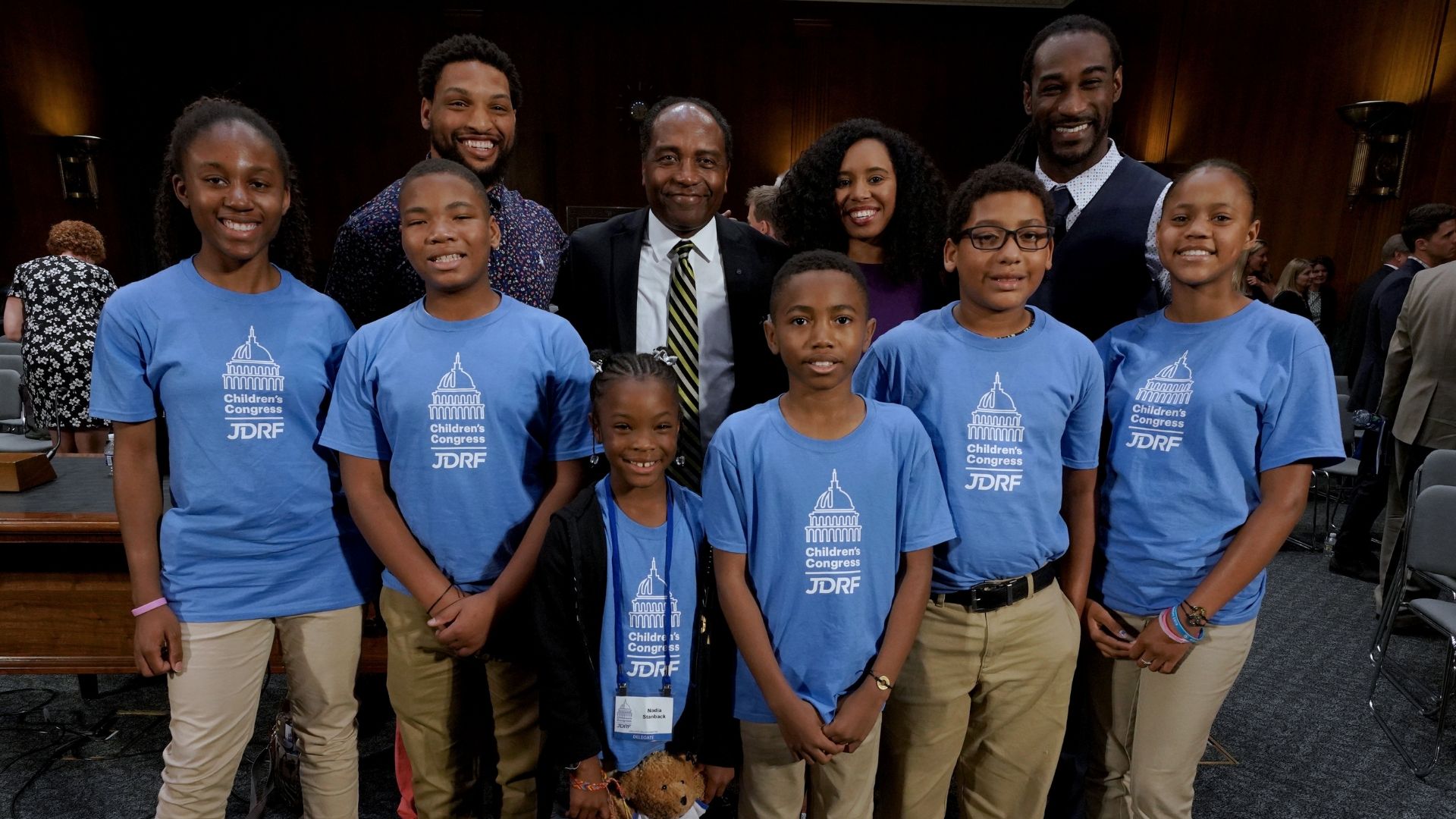
Breakthrough T1D Mission Coordinator Brandon Denson, Director of the NIDDK Dr. Griffin Rodgers, Dancer Christina Martin, Former NFL Athlete Isaiah Stanback and several Breakthrough T1D Youth Delegates (Photo by Jemal Countess/Getty Images for Breakthrough T1D)
“Through the invaluable support of Congress, through collaborative and coordinated research efforts, through the hard work of our scientists and through the dedication of our clinical research volunteers, we have made important progress toward our goals of understanding, preventing, treating and ultimately curing type 1 diabetes.”
Aaron J. Kowalski, Ph.D., Breakthrough T1D President and CEO
“Your leadership has led to significant breakthroughs and is leading us closer to our ultimate goal of curing type one diabetes.
“Diabetes impacts every aspect of life. These children do so much hard work to manage their diabetes—they are truly amazing and their parents are, too. Each of these families can share countless stories about how difficult T1D can be, as can mine.
“We know that people with diabetes achieve better results when they can select tools that are best for them.
“It is unacceptable for anyone to ration their insulin because of cost.
“Senators, let me say, that [T1D] research is too important to have an expiration date.”
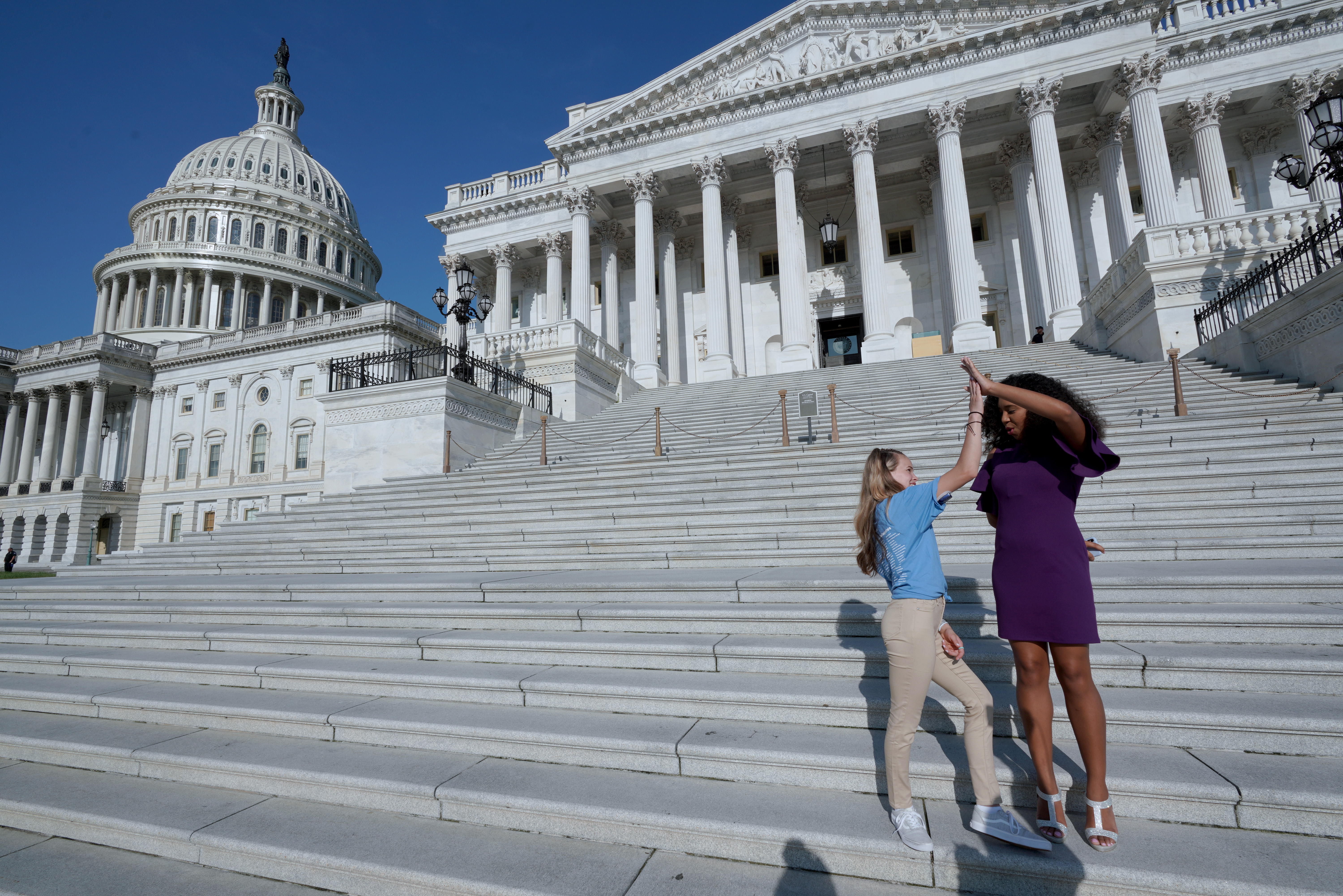
Professional dancer Christina Martin celebrates with a Breakthrough T1D Youth Delegate (Photo by Jemal Countess/Getty Images for Breakthrough T1D)
“When your sugar is low, do you have trouble remembering your lines?”
“How do you keep your devices on when you are surfing?”
“How did you go from your parents helping you all the time to transitioning on your own when you went to college to play basketball?”
“Have you ever been in the middle of a [NASCAR] race and hit a low? Did you keep going?”
They were questions of both honest interest mixed with a bit of star-struck wonder as delegates at Breakthrough T1D’s Children’s Congress 2019 took turns asking celebrity ambassadors about personal experiences, advice, and embarrassing moments.
The celebrities with type 1 diabetes—three actors, a race car driver, a professional dancer, a surfer, a basketball player and an ESPN sports commentator—responded with just as much energy, humor and honesty.
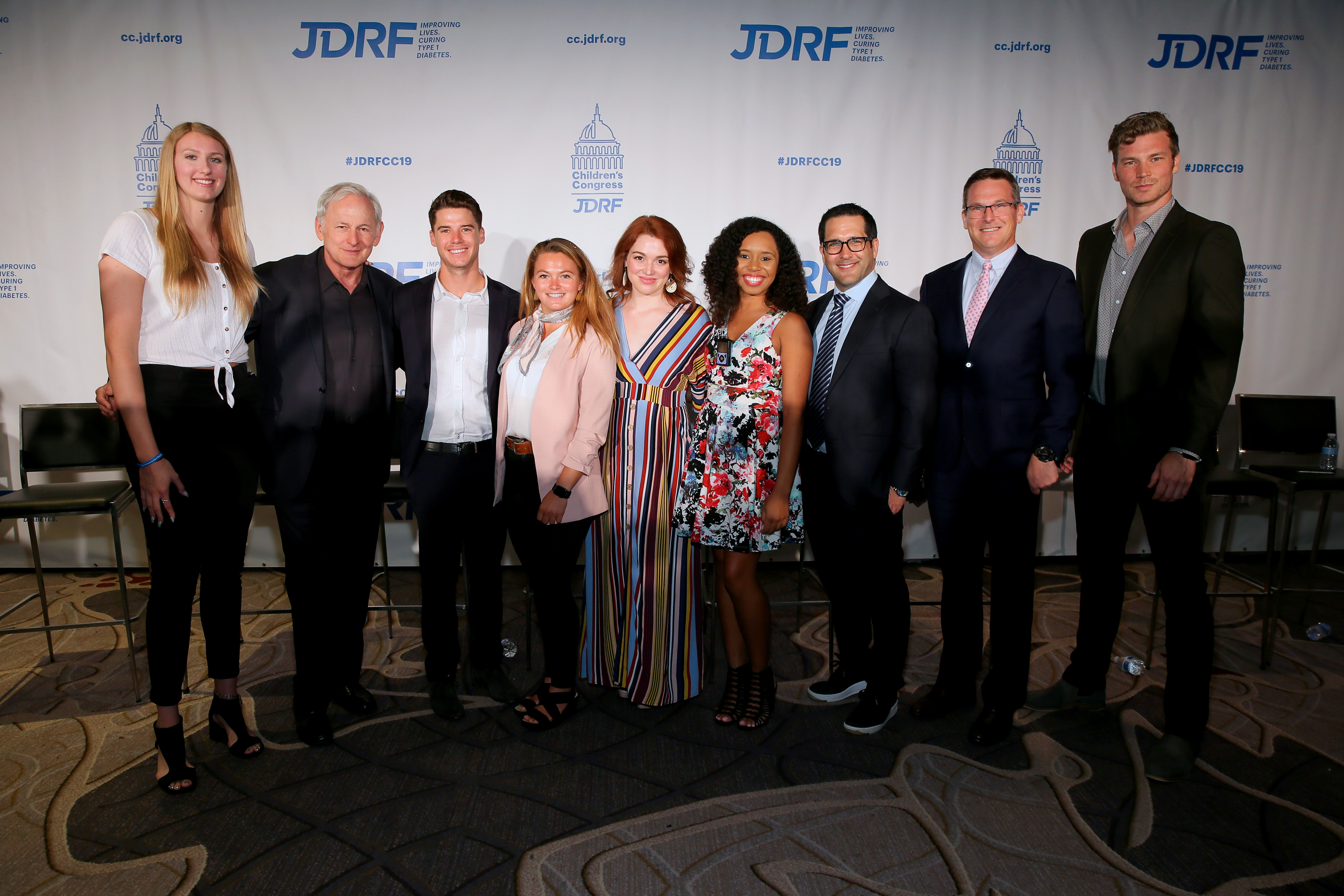
Lauren Cox, Victor Garber, Ryan Reed, Fiona Wylde, Jennifer Stone, Christina Martin, Adam Schefter, Aaron Kowalski and Derek Theler (Photo by Jemal Countess/Getty Images for Breakthrough T1D)
Actress Jennifer Stone said her continuous glucose monitor once started buzzing in the middle of a scene. She was newly diagnosed, hadn’t told anyone on the set she had type 1 diabetes (T1D) and was “so embarrassed.”
“I finally just said, ‘it’s just my pancreas.’”

Fiona Wylde, Jennifer Stone, Christina Martin (Photo by Jemal Countess/Getty Images for Breakthrough T1D)
Actor Victor Garber shared a similar story, also igniting laughter. “My Omnipod alarm went off while we were filming. I didn’t know what it was. It had never gone off before.” He called the sound man over to report an issue on the set; then realized he was the one buzzing. “And as you know, they do not stop. Even when you pound on them—which is what I did. They do not stop.”
Key in both stories, and throughout the session, was the core message: Share your T1D with those around you. They are your support network and your life-line in times of critical need.
“I finally realized, ‘what am I hiding?’ It’s important that you can trust people, to tell them what is going on. There is no shame here,” Garber said.
When dancer Christina Martin was a teenager she refused to wear her T1D devices. They didn’t look good with her form-fitting dance outfits and “bounced around” when she performed. But the highs, lows, and crashes took a toll. “I started to learn that [denial] was not going to get me to where I wanted to be.” Today, she makes certain everyone knows about her T1D, that she eats well and takes snacks when needed to keep her levels balanced.
NASCAR driver Ryan Reed said he’s never had to pull off the track because his levels spiked or dipped. But, he said he always has a special protein drink in the car with him. “And that is whether I am racing or not. Any time you are behind the wheel of a motor vehicle, you need to check your levels and be prepared.”
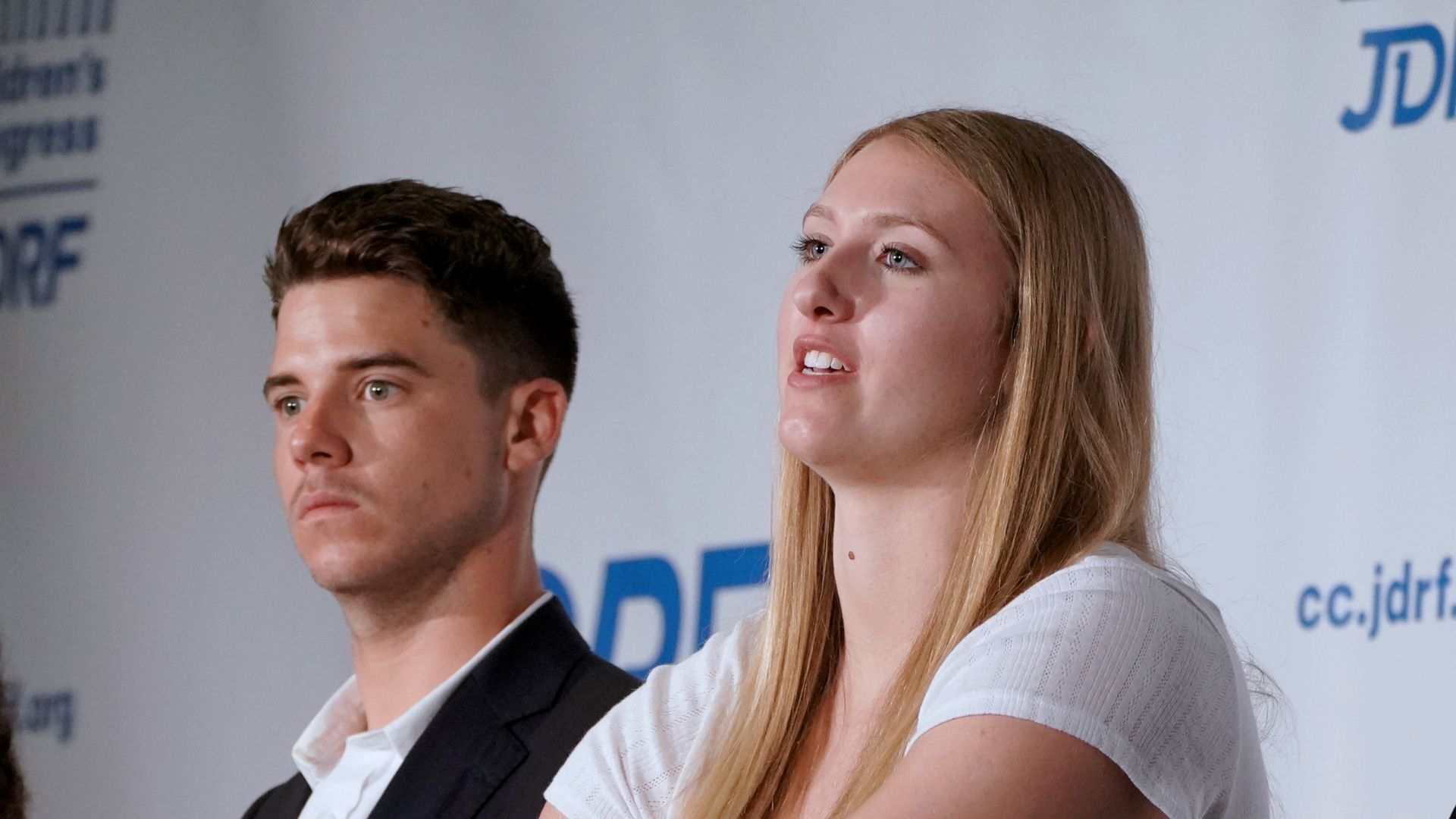
NASCAR Racer Ryan Reed and NCAA Athlete Lauren Cox (Photo by Jemal Countess/Getty Images for Breakthrough T1D)
Nationally ranked college basketball player Lauren Cox said she can only compete at such a high level because she has a support network on the sidelines watching out for and helping her. “The trainers, the other players, my coaches, they see it on the sideline, and they ask if I am OK.” When she is not, she comes out. “You need to listen to and take [care of your body] if you want to keep playing.”
Actor Derek Theler acknowledged that sometimes his continuous glucose monitor does not fit with the role he is playing. Then, he wears it low at his belt line, so that he’s still in character and still taking care of himself. But, when he played Thor, he wore his CGM with pride. It was under his muscular costume, but he knew it was there.
“That made me really feel like a super hero.”
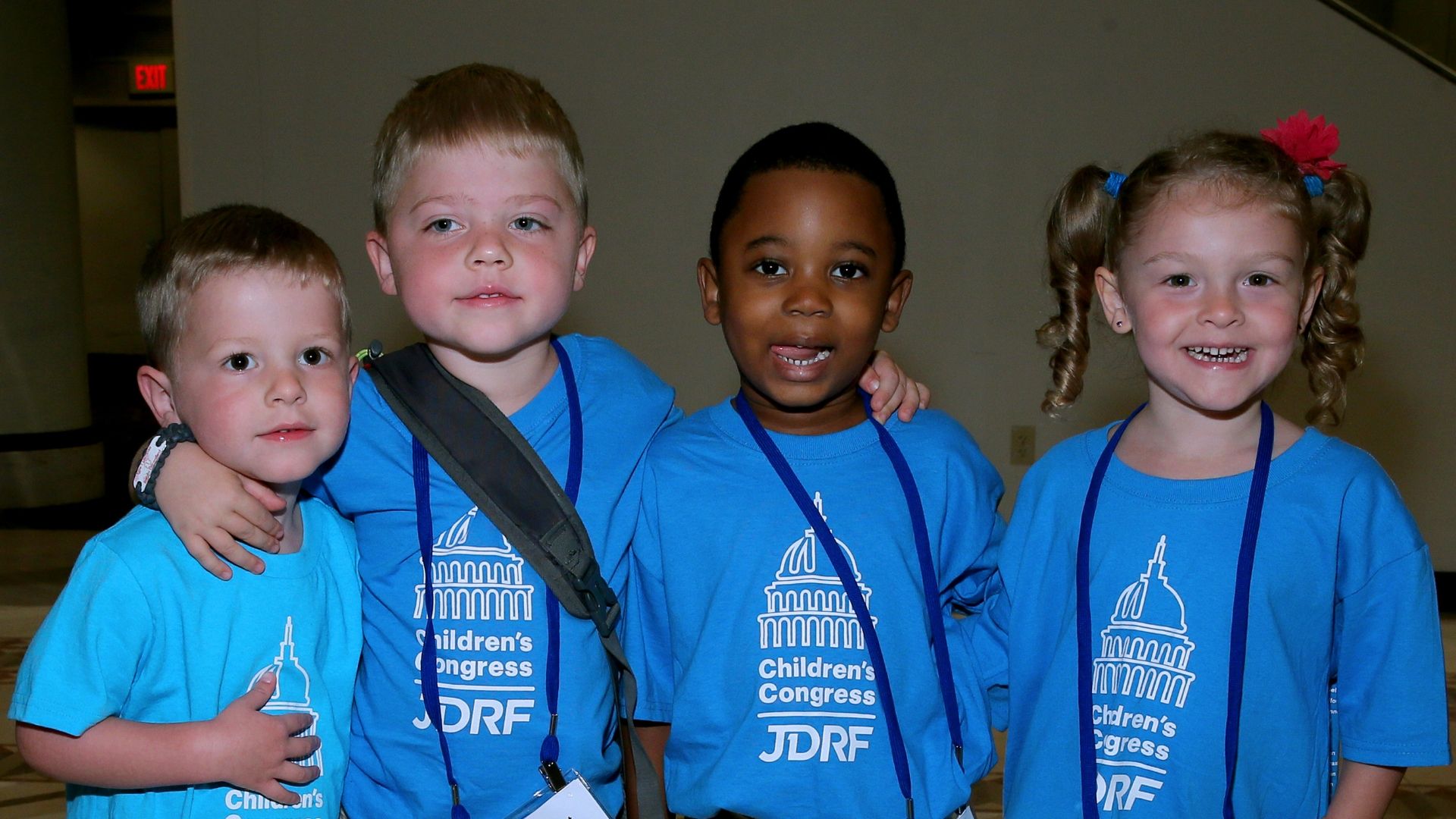
Breakthrough T1D Children’s Congress Members (Photo by Jemal Countess/Getty Images for Breakthrough T1D)
The session closed on a bit of a more serious note when an 11-year-old delegate from Florida asked Breakthrough T1D President and CEO Aaron Kowalski, Ph.D., why and when he decided to work toward finding cures for T1D. Aaron said his younger brother was diagnosed first and had serious lows at night that led to seizures. “That was really hard on all of us.”
“Then, when I was diagnosed, I remember my dad coming home from a business trip and being so sad.”
A science and math star, he decided to work toward helping “my brother, my dad, myself and other people with T1D.”
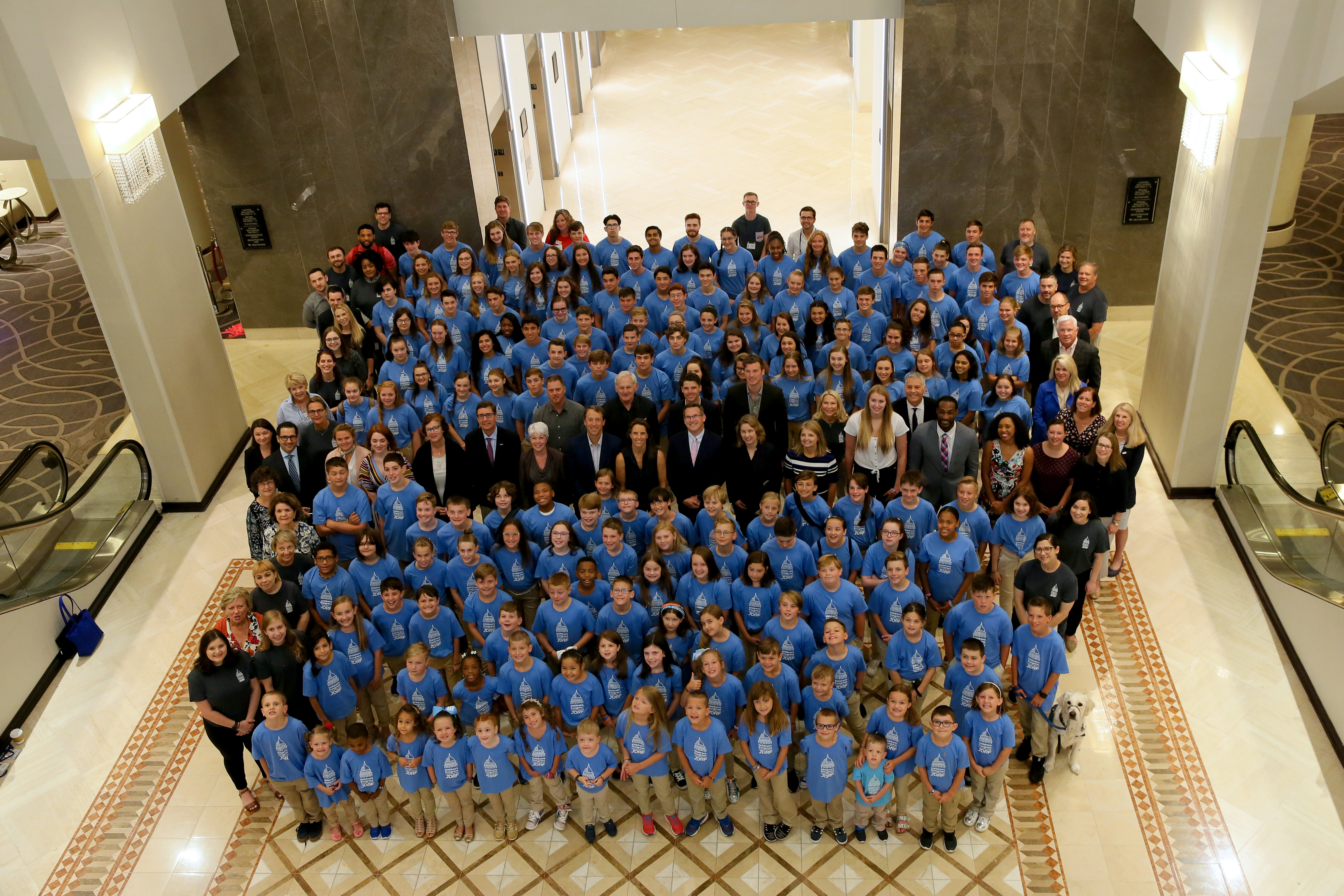
2019 Breakthrough T1D Children’s Congress (Photo by Jemal Countess/Getty Images for Breakthrough T1D)
Event Unites T1D Celebrities and Youth with Congressional Leadership
We are just days away from one of Breakthrough T1D’s most celebrated and impactful events: 2019 Children’s Congress, taking place July 8-10 in Washington, DC.
More than 160 youth delegates from around the world and adult celebrities will help Breakthrough T1D shine the spotlight on type 1 diabetes (T1D) and the needs of our community.
The three-day Congress begins Monday and culminates with a Senate Hearing Wednesday led by Senator Susan Collins (R-ME) and Senator Bob Casey (D-PA). At the hearing, people living with T1D, along with the director of the National Institute of Diabetes and Digestive and Kidney Diseases, will outline how the SDP is improving lives and advancing research to treat, prevent, and find cures for the disease.
Throughout the event, our youth delegates meet with their home-town Representatives and Senators, join us in speaking with the Food and Drug Administration, and testify before a Senate hearing.
This year, we’re thrilled that CEO Aaron Kowalski, Ph.D., will join two delegates, actor Victor Garber who has lived with T1D for over 50 years, and Dr. Griffin Rodgers, who heads the National Institutes of Health’s diabetes institute, in testifying at the hearing.
We will be advocating for the renewal of the Special Diabetes Program, which historically has directed $150M annually to T1D research. We all know how important this funding is to our work. Both the Senate and House have introduced bills for a five year renewal of the program, and we are fighting to renew it before it expires on October 1st. We also will continue calling for coverage, affordability and choice, so our community can access the insulin, technologies, and treatments they need to stay healthy until we have a cure.
A moving, exciting and powerful event, our 2019 Children’s Congress affords us the opportunity to raise awareness of the needs of our community and advocate for support from national leaders who can help us do so much more than we can do alone.
It also presents an unparalleled opportunity to unify our community in a shared sense of pride that our voices are heard—and that together, we are making a true difference in advancing cures and improving lives.
Please stay tuned for additional coverage!
